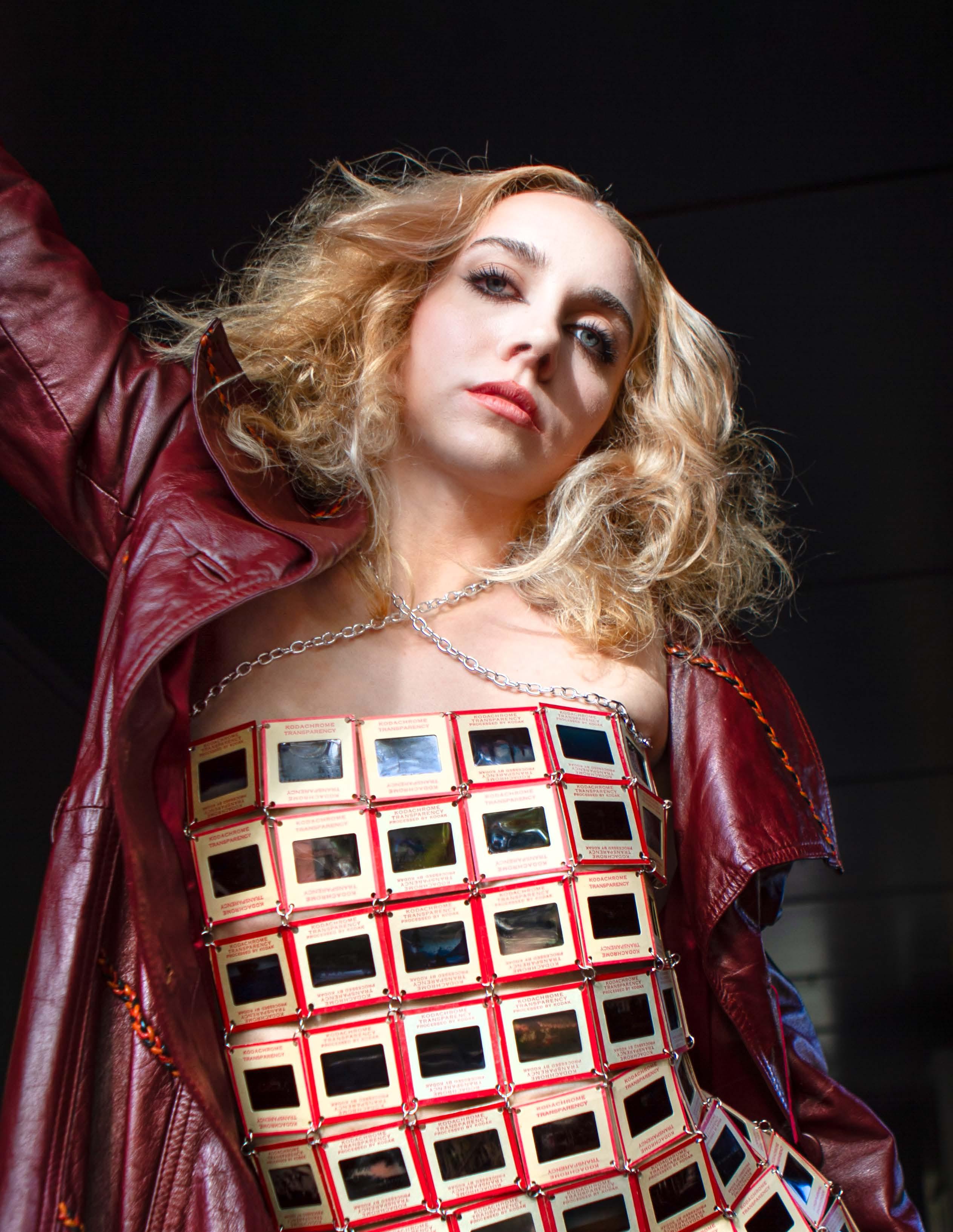

VOLUME XII
VOLUME XII
Contents
AUTHENTICATION
THE MOMENTS THAT MATTER DECKED OUT AND DIVING IN THE MULTIVERSE OF ASIAN MARKETS THE X-FACTOR THE IMPOSSIBILITY OF AUTHENTICITY
A PROJECTED REALITY THE “IT GIRL”
THE Y’ALLTERNATIVE AESTHETIC AND THE CHANGING FACE OF THE MODERN SOUTH URBAN JUNGLE CONTINUE WATCHING
INTERSTITIAL STATES: FASHION AND PRODUCT PASSPORTS AN ODE TO ANALOG OUR SCENE DISCO, HOUSE, HYPERPOP, AND THE RECESSION
IF YOU’RE READING THIS, I’M SORRY THE POLITICS OF FASHION
Contents
10 12 14 24 26 28 30 40 42 44 54 56 58 60 70 72 74
Table of Contents
Editor-in-Chief Creative Director Finance Director Writing Co-Directors
Photography Director Modeling Co-Directors Styling Co-Directors Set Design Co-Directors Digital Co-Directors Design Staff
SARAH QUINN KEYMONI SAKIL-SLACK CATEY COX ROSA STANCIL SUSANNAH RICHARDSON VY BUI JOSHUA BERMUDEZ BENNETT BUTLER KATIE HOLMSTROM
DELANEY CAULDER JULIE ZHOU JANEY HARLOW ANABEL RUSSO JELANI SEARS
KAT BARNABEI RILEY BECKER KEVIN FOSTER CHANDLER LAMM DEANNA LIAO KLOE TUCKER ABIGAIL HARRIS ANGEL HERNANDEZ CAELEY HAWKES ALEX JACKAN MADISON MINIHAN SANJITA THOPPAY
Writing Staff
ELYSE BOLDIZAR ISABELLA BROCCOLO SLOANE BYRD LYRIC CHASSIN
KATE GOODWIN ANNA HADDAD MADDIE HALL
OMIA HAROON KAYLEE JACOBS
KLARISSA KRONSCHNABEL
SAMIYAH LATEEF POLLY O’NEAL GABRIELLE SABIA
LAUREN SLATTERY LEAH TRAN MAE WILLIAMS
Staff
Staff 6
Photography
Staff
NATALIE FOLSOM SARAH JARRELL
VIOSA KOLIQI KSENIA MATVEEVA MAYA MITCHALL TAE PARK RORY SULLIVAN NAIMA SUTTON TAYLOR WITTIG
Set Design Staff Digital Staff
SOPHIE DICKERSON KATIE FINAN LILO HARRIS TEJU LANKIPALLI ERIN SECOSKY EMMA SULLIVAN ANYA TADISINA RILEY WARPULA
LILLY BAROZZINI ANNA GRACE BOWLES LAURA COOPER CATALINA DALESSIO-SKARE SHARON GEORGE EMMIEN HUFFMAN VARUNYA KARTHIKEYAN WIL KING AVA MCDONALD AVA MILHOLIN ALIX PARSONS TAYLOR RANDOLPH
Stylists
AMAYA AL-MUSSAWIR SYDNEY BROWN VIRGINIA CARTER MATT CHANSOMBAT CLAIRE DAVES ISAAC DAVIS MEGHAN FICKLING MELIS HAFIZOGLU TANNER HAMERLING BRAXTON HARE BROOKE HERRIN REAGAN KURTZ
LINDSAY LOVE PRISCILLA MARTINEZ NIKKI MILLER LYDIA MITCHELL KAELI MURPHY MIRA PHILLIPS SAMANTHA RONCEVICH
ETHAN SADLER HOPE SCARLETT FAIRCLOTH ANIKA SEWARD TYLER SMITH LIORA TAL SOPHIE TIMBERLAKE HENRY TRAN SOPHIE TREW KENDALL WISNIEWSKI
Models
INDIA ALLAN JOSEPH BUNGER LINDSAY CARTER RAYAN CHAUDHRY KAYLA CLARK THERESA COGEN JUSTUS DENIZARD CAROLINE DIAZ CHRISTAL DITA YSA FERRERIA NICOLE HARRIS HANNAH HATCH KAYLA HILLMAN JACOB HODGES KENNEDI HOSEY IMMANUEL JACKSON CORA JONES RACHEL KELLY JADYN KEOBOUALA GRACE LINCROFT GRIER LOVE JIMMY MCMANUS JAMAL MOHAMAD SWETHA NATARAJAN NYSSA NDEY-BONGO ELLE NEWKIRK FIDELISE PAKU STELLA PARK CLAIRE PATRICK HEIDI REID NADHIR SAIT KAT SCHWARTZ HANNAH SIMPSON ELEANOR SLYMAN JOSEPH SMITH AIDEN TAMTON KAI VOSBERG ALANDYA WARREN JADA WILLIAMS LARA YASSIN
7

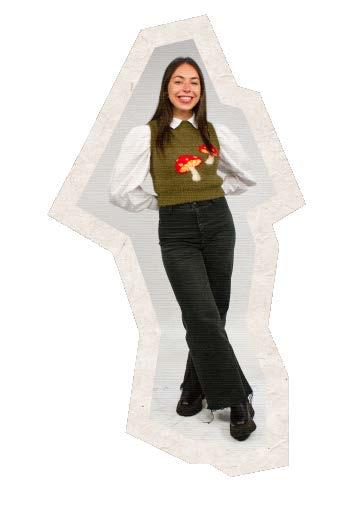


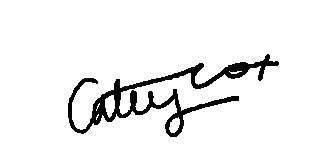







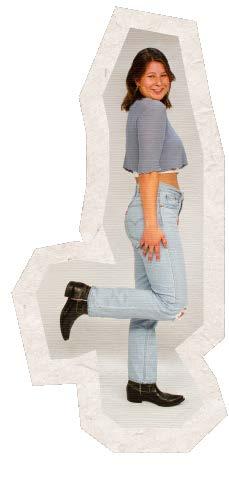

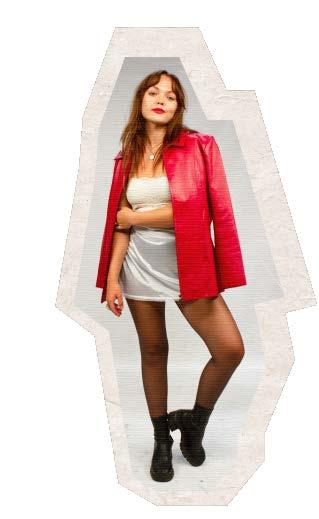






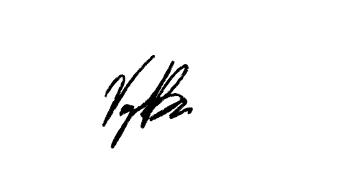
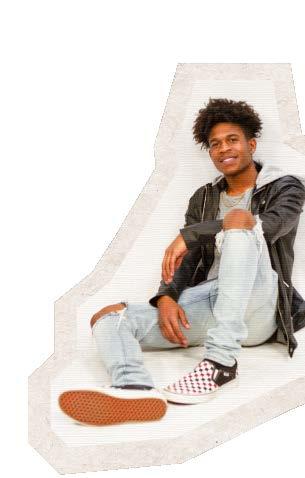










CREATIVE DIRECTOR EDITOR-IN-CHIEF WRITING CO-DIRECTOR Styling Co-Director MODELING CO-DIRECTOR PHOTOGRAPHYDIRECTOR DIGITAL CO-DIRECTOR DIGITALCo-Director SETDESIGNCo-Director SET DESIGN Co-Director StylingCo-Director
Editor LetterFROM
THE

 Sarah Quinn Editor-in-Chief
Sarah Quinn Editor-in-Chief

n my past three years with Platform, I have seen six magazines roll out. Each edition is filled with wild cre ativity and ideas. In becoming editor-in-chief, I won dered how we could possibly go beyond what has al ready been made.
Platform is defined as a fashion and culture magazine as well as a creative community. In our past issues ev idence of such high fashion and creativity is beyond clear. However, what is often overlooked is the culture and community that makes up Platform. The people and stories behind our words and photos haven’t re ceived as much attention, but they are what distinguish es Platform from any other fashion magazine. These are the people I want to highlight, as well as those who surround us in our community. It is their stories, what they are inspired by, and what defines them that I find so captivating.
In order to portray this idea and connect every creator behind Platform under a single goal, in this issue, for the first time ever, we introduced a theme and chose “authenticity.” Authenticity means something that is . It tells the genuine stories of who we are and the people who surround us. It highlights subcultures, com munities, identities, places, and ideas that we feel con nected to. Each article, photoshoot, and design takes a unique approach to the word “authenticity,” but they are united under something that is honest. This issue still has bold fashion, daring designs, and ground-breaking articles that are true to Platform’s identity, but through this theme, we are able to extend the definition of what Platform is as a magazine and community.
For this issue to be representative of all the things that I love about this organization makes me incredibly proud. I have a deep passion for Platform and admira tion for every single member that has walked through our doors. Through these pages, you will find the ded ication, creativity, and authenticity of our community, which I get the pleasure of witnessing every day.
9

10
AUTHENT
AUTHENT
ICATION
by Rosa Stancil
Authentication
is defined as the process or action of proving or showing something to be true, genuine, or valid. When I think of authentication, I immediate ly think of designer handbags. A new hobby of mine is scouring luxury resale sites, like The Real Real and Vesti aire Collective. I rarely buy anything, but I enjoy the hunt for finding unique and authentic designer bags for less. Sites like this offer an authentication process so that the customer can be confident in their purchase. Authentic bags usually come with an authentication card or number located inside the bag. However, it can be difficult at times to know for sure if the bag is authentic or not when pur chasing from any third party, especially ones that do not offer authentication services.
This new hobby has taught me that people are a lot like designer handbags. While there are some incredibly unique and authentic designer bags out there, there is also a world full of copycats. If you want to find a truly authentic person, you may have to look even longer than searching for that rare Chanel on The Real Real. This is because, with people, copycats go beyond Canal Street and the DHGate website.
Just like how we search for authentic luxury goods, we look for authentic people. Both people and designer bags must be closely examined to determine their authentici ty. Both answers are ultimately within unless you are an expert luxury authenticator or extremely good at read ing people. At the end of the day, people like me and you wouldn’t be able to determine if the Bottega bag resting
on the shoulder of a girl, sporting a chic all-black outfit walking by with her hair perfectly blown out, is authentic. The girl herself may not even be the chic, put-together, “it” girl she is portraying. She could be just as phony or authentic as the bag resting on her shoulder.
It is difficult to depict who is a phony and who is the real deal. After all, humans are much more complex than handbags. There is no definite way to authenticate people. I can’t help but wonder if we all had to walk around with an authentication card or number, would we be more in clined to discover and be our authentic selves? Or would we still curate our style based on the trends we see on ce lebrities and Pinterest, and build our personalities based on those of our friends or characters in our favorite TV shows? The difference between humans and handbags is that we are exposed to these aspects of life that influence us, whether we want them to or not. Most of us are me ticulously curating how we are perceived by the simple decisions we make in our everyday lives. What would you want your authentication card to say? Authentic or pho ny? One is not right or wrong. Perhaps you will happily be the knockoff version of Emma Chamberlain (aren’t we all just trying to be like her after all).
While there is nothing wrong with us curating the lives we want for ourselves, to an extent, imagine what it would be like to behave, dress, speak, and live as if you did have an authentication card or number you had to show to anyone you encountered.
11
Illustration by Kloe Tucker
The Moments
by Susannah Richardson
Stories

are universal.
The unique ways that individuals tell stories has a powerful way of weaving connections throughout each and every one of us that are willing to understand. Stories, told through a multitude of circumstances, have the capability to form a web that is stretched, twisted, and interlaced across humankind over and over again.
I don’t claim to understand even a sliver of everyone’s experience. However, I do feel drawn towards musing on moments that matter, and I have a sense that everyone else has this affinity too. It could just be a

“Rarely will you be the first in all of human history to experience anything, but you will experience it all your own just the same.”
– Kyleigh Leddy, ThePerfectOther
That Matter Moments
Empire State Building for example. Over 2 million people flock to the city every year to see the view and marvel at how astonishing it all is. Think of your chosen place. Raleigh, maybe. On a clear day, driving up McDowell Street from the highway and seeing the skyline come into view, is a moment I am excited to experience every time it comes around.
Eavesdropping

I don’t mean this maliciously at all. At the library recently,
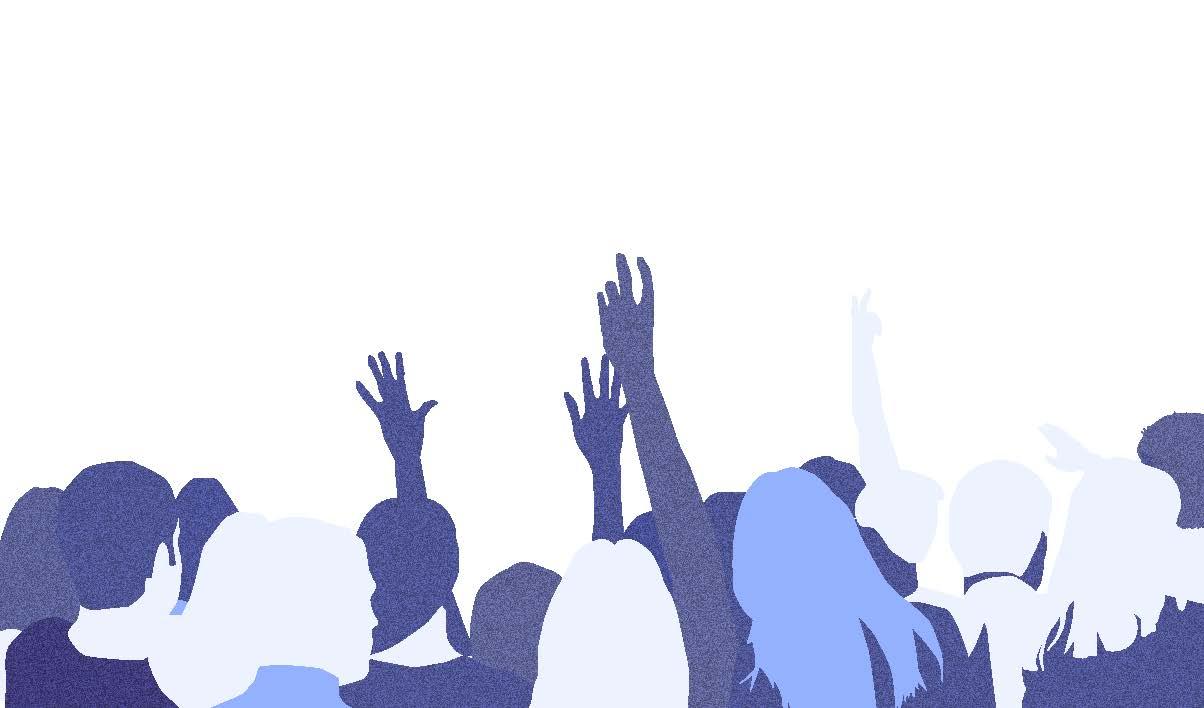
When the band quiets
At the beginning of September, I went to an outdoor concert near Charleston, South Carolina. The venue was close to being perfect. Behind me was a dive bar that looked like a bungalow beach shop, in front of me was the stage, and just beyond that was the ocean. A palpable feeling of ease covered the band and the whole crowd; slowing down to enjoy the night was the goal. Even onlookers from the hotels nearby swayed to the sounds of the show from their cozy balconies. During one of the final songs, the band quieted and stepped out of the spotlight. The audience continued to sing the song and the look on the musician’s faces was priceless. These moments occur countless times at performances of all kinds, but the graciousness from both sides of the stage has yet to be extinguished.
by Riley Becker
13
Illustration
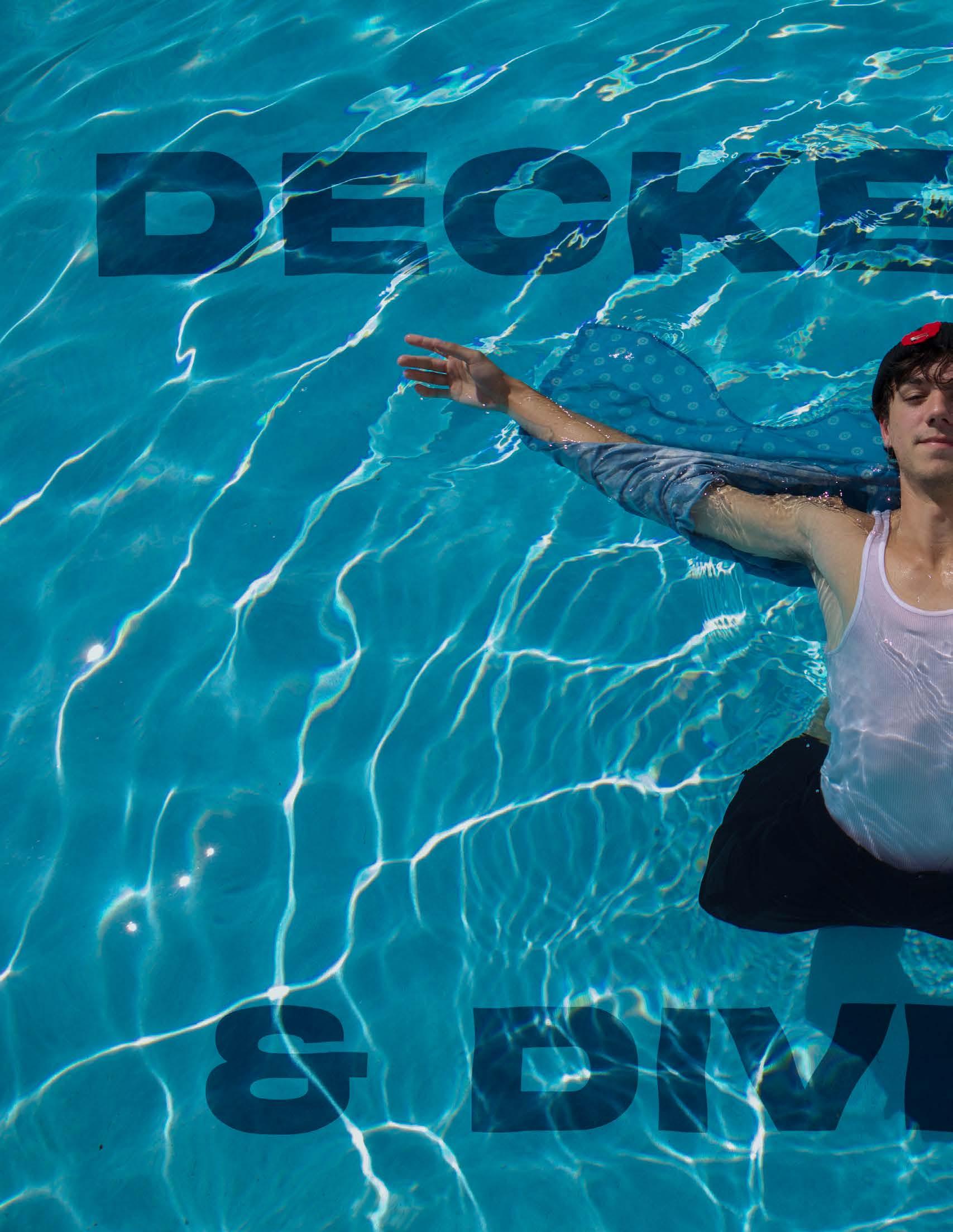 MODEL: Jimmy McManus
PHOTOGRAPHY: Ksenia Matveeva
STYLING: Mira Phillips
MODEL: Jimmy McManus
PHOTOGRAPHY: Ksenia Matveeva
STYLING: Mira Phillips
14
SET: Sophie Dickerson, Katie Finan, Teju Lankipalli, Anya Tadisina, & Riley Warpula
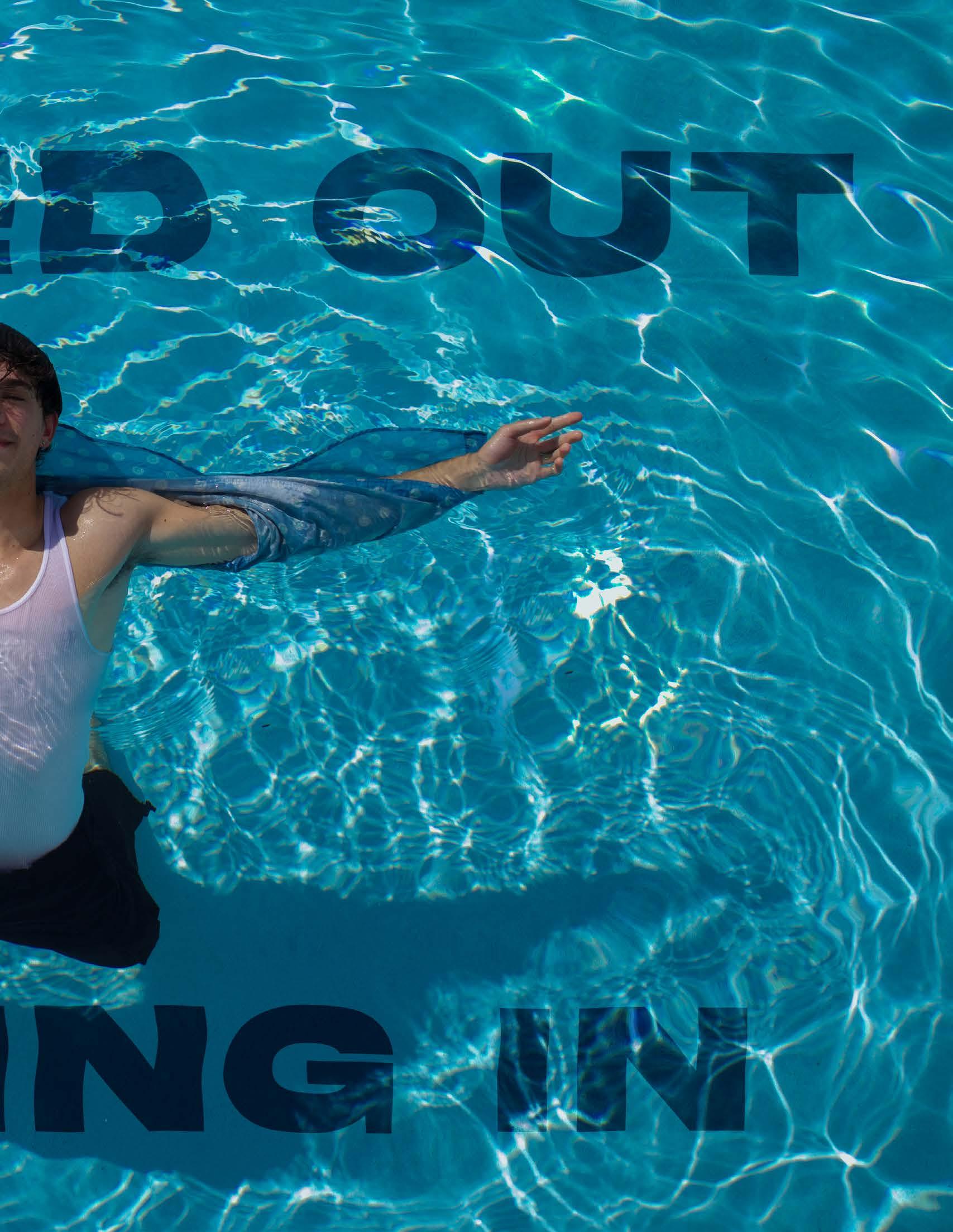
15
 MODEL: Hannah Simpson
MODEL: Hannah Simpson
16
PHOTOGRAPHY: Ksenia Matveeva STYLING: Hope Scarlett Faircloth

17
MODEL: Theresa Cogen
PHOTOGRAPHY:
Taylor Wittig STYLING: Ethan Sadler
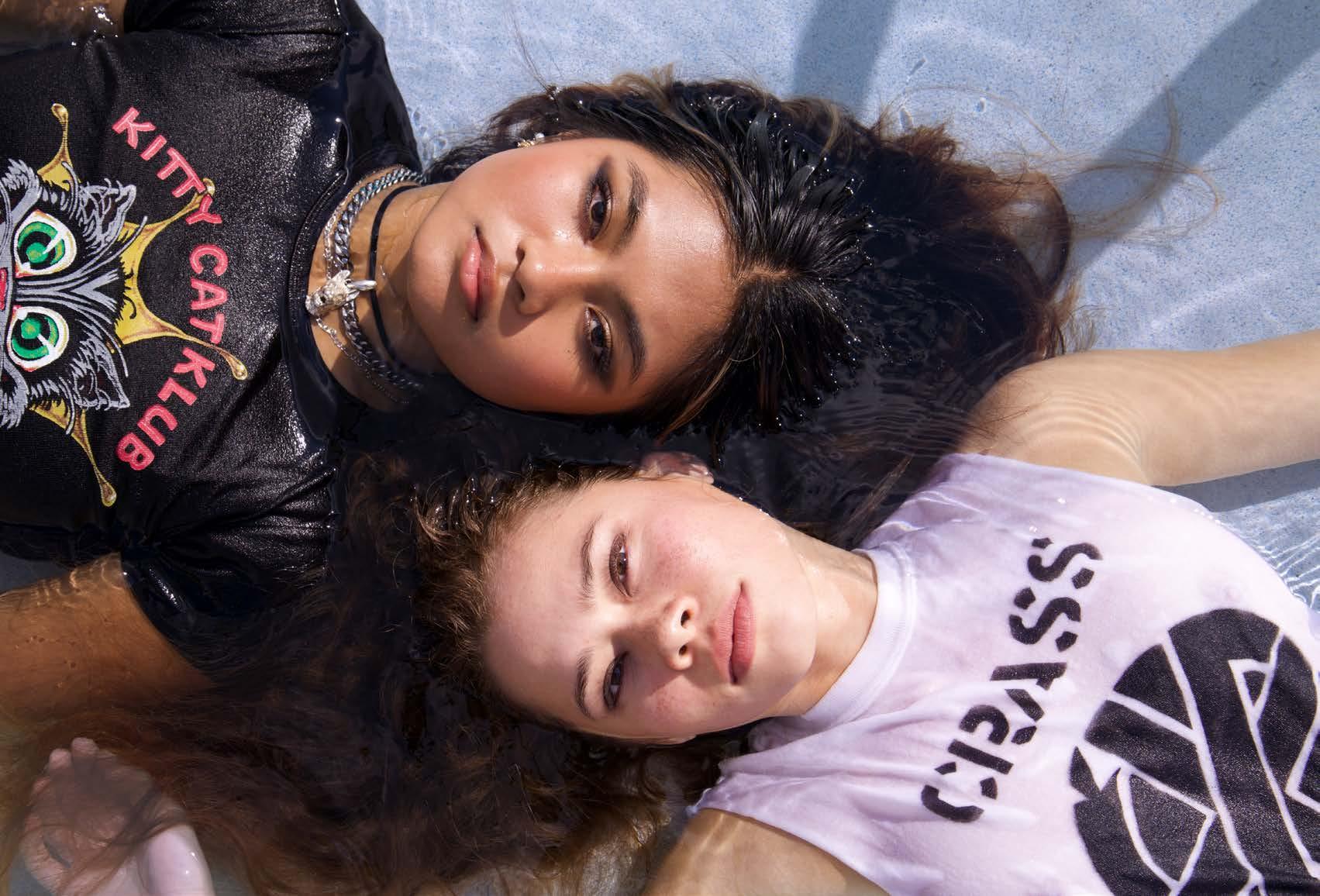
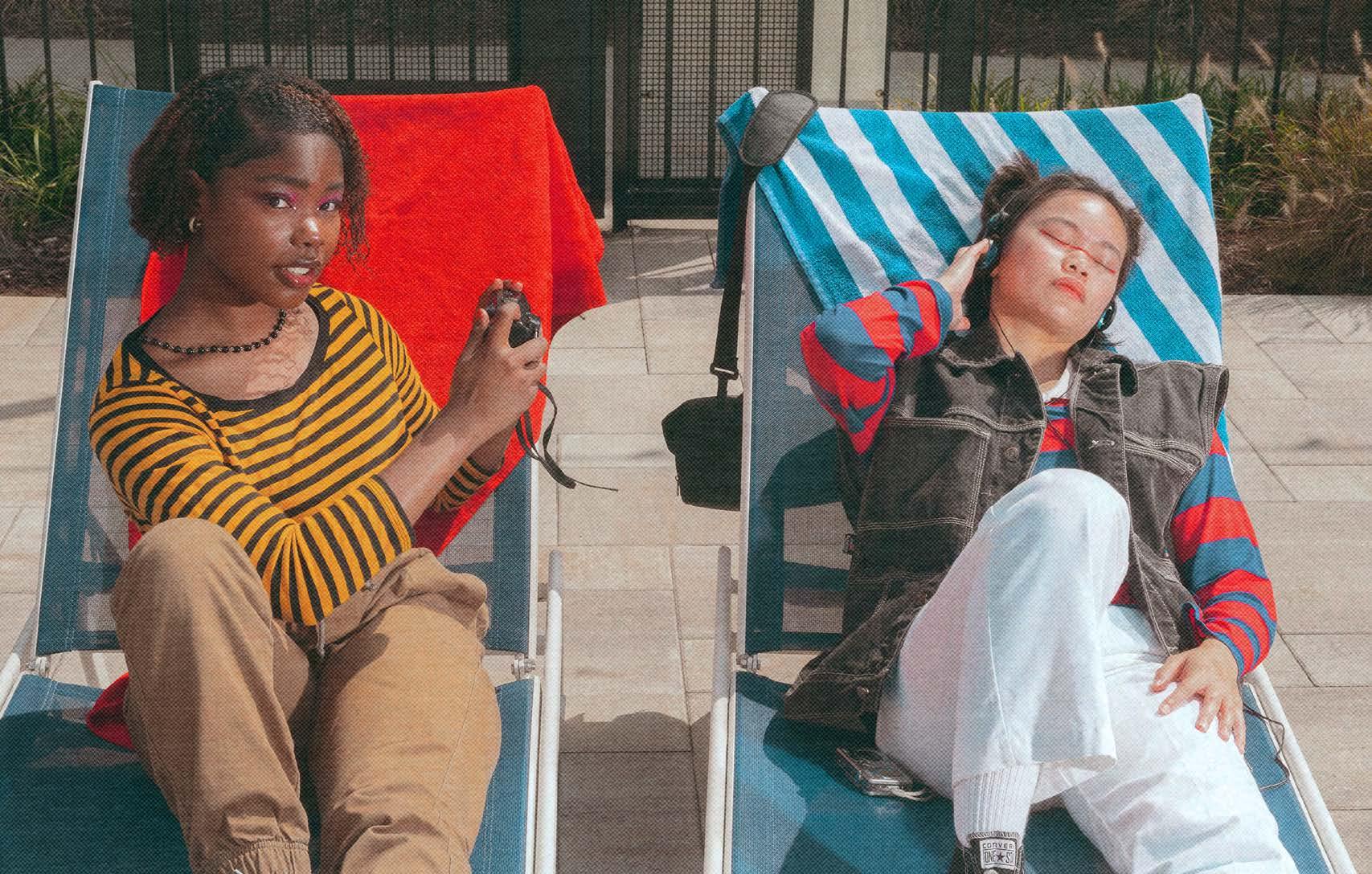
18
MODELS: Christal Dita, Ysa Ferreria, Hannah Simpson, & Alandya Warren PHOTOGRAPHY: Ksenia Matveeva & Rory Sullivan STYLING: Amaya Al-Mussawir, Priscilla Martinez, Hope Scarlett Faircloth, & Sophie Trew


 MODELS: Cora Jones & Grier Love PHOTOGRAPHY: Sarah Jarrell, & Tae Park STYLING: Virginia Carter & Melis Hafizoglu
MODELS: Cora Jones & Grier Love PHOTOGRAPHY: Sarah Jarrell, & Tae Park STYLING: Virginia Carter & Melis Hafizoglu
 MODELS: Jimmy McManus & Eleanor Slyman
MODELS: Jimmy McManus & Eleanor Slyman
20
PHOTOGRAPHY: Ksenia Matveeva STYLING: Braxton Hare & Mira Phillips


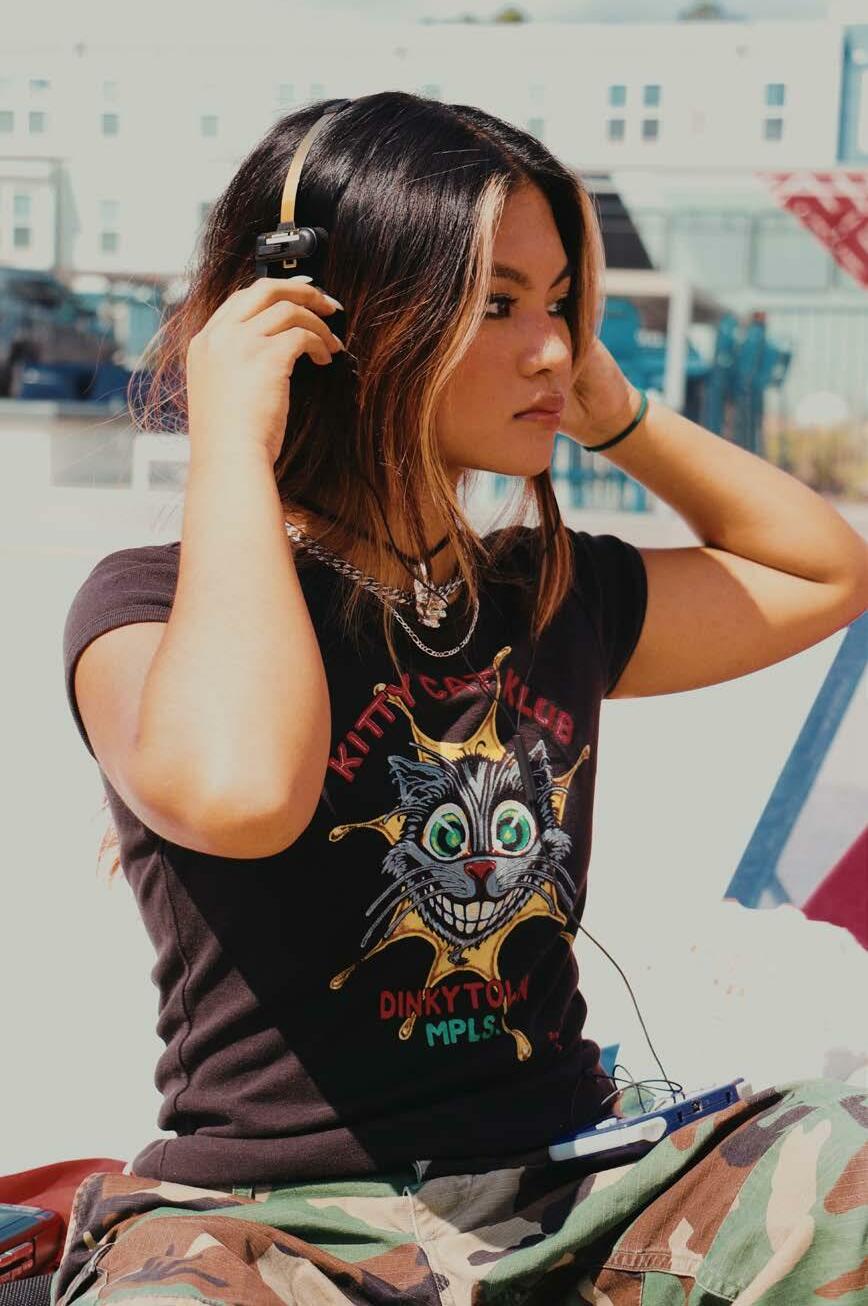
21
MODELS: Grier Love & Ysa Ferreria PHOTOGRAPHY: Ksenia Matveeva & Rory Sullivan STYLING: Virginia Carter & Amaya Al-Mussawir
 PHOTOGRAPHY: Rory Sullivan
PHOTOGRAPHY: Rory Sullivan


23
The Multiverse of Asian Markets
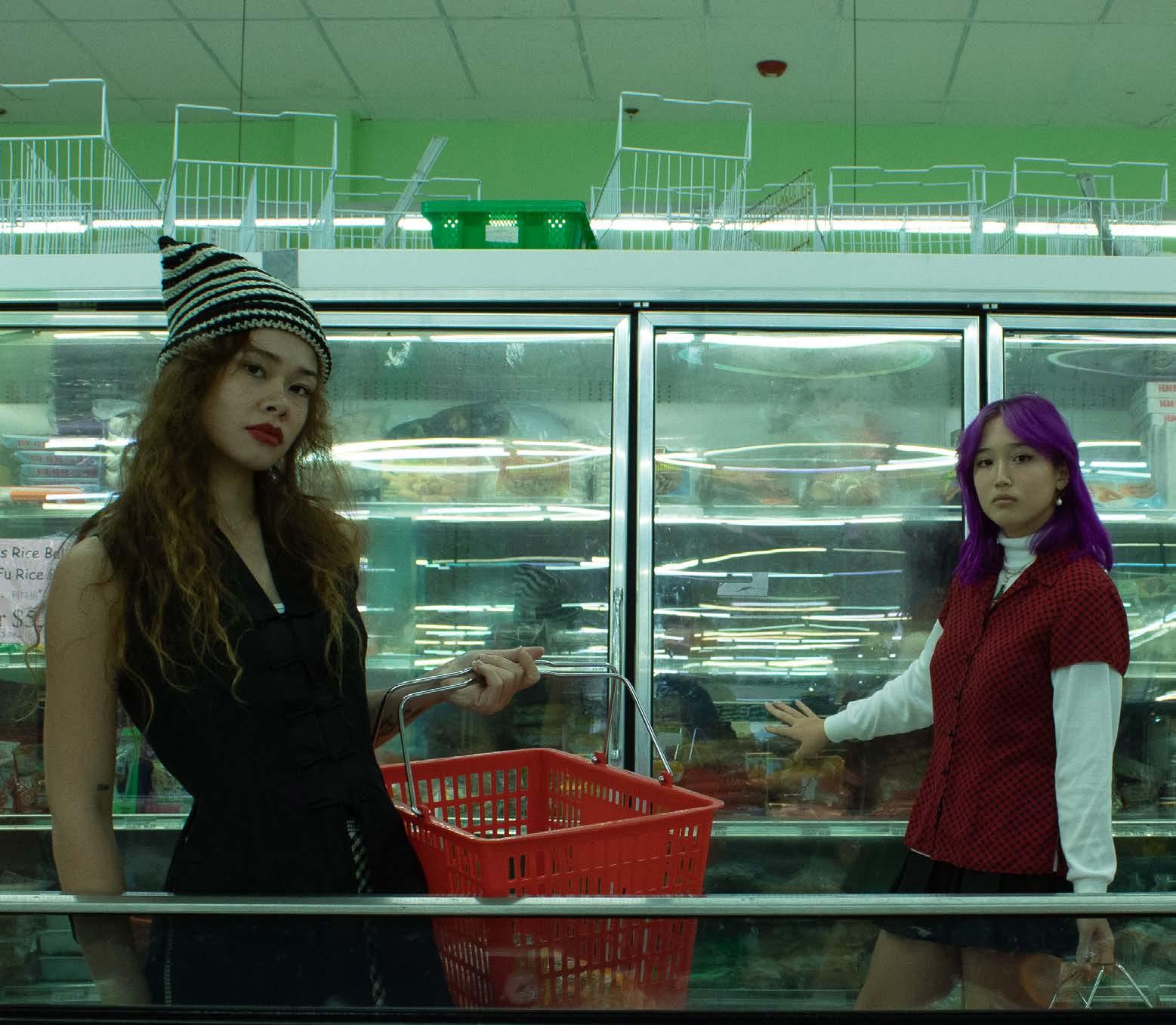 BY LEAH TRAN
BY LEAH TRAN
24
MODELS: Elle Newkirk & Hannah Simpson PHOTOGRAPHY: Maya Mitchall STYLING: Matt Chansombat and Henry Tran
TheGrand Asia Market is only ten minutes away from my apartment. It’s an old, brick building off the side of the highway, and although it looked plain, it held the universe I was trying to get back to. The universe where a giant bowl of my mother’s mi xao mem was before me. A Vietnamese dish my mother made after she had come home from her 12-hour shifts in a universe of heavy machinery and printing labels. As a kid, I would watch her make the dish, learning all of the ingredients by heart. Once I was older, I would cut all of those colorful vegetables and boil those soft egg noodles, so that when she came back home from that universe, she had everything ready to cook. It was a routine I got sick of doing eventually, but I realize now it was a special sliver of time when we were in the same universe.
Now I’m older and alone, trying to navigate a universe with out those childhood comforts. One where I had hardly ever spoken or heard Vietnamese. I was left with only the reci pe ingrained in my mind, and I was desperate to be in that shared universe again. Even if it meant I was the only one there.
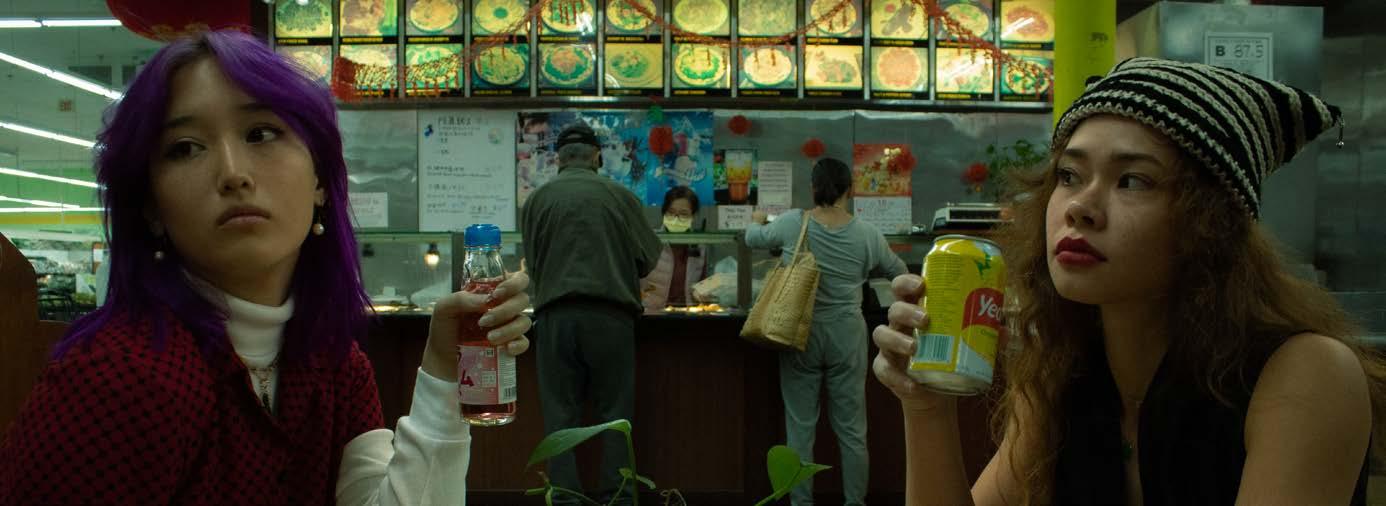
It doesn’t take long for me to return to that universe when I enter those black doors of the market. The explosion of col ors from all of the foreign products and produce. The hand written prices on the paper taped to each bin. The smell of the freshly steamed bun baos. The noise of various languages overlapping. It all welcomes me back to that universe. The one where my little sister and I tagged along with my stepfa ther to buy those ingredients for my mother.
Even if I would only be here for twenty minutes, I wanted to take my time. I wanted to walk slowly and take in everything before me.
But as I do, I begin to realize that this place didn’t just hold the universe I had missed so much. It held so many others. When I pass by the fruit aisle, I see another young person reaching for the Korean pears. He looked around my age. Before I knew it, I was slipping away into his universe, one
where he too had a mother that sat at the dining table cutting various fruits with a skill better than any chef. Now fruit was a rarity to be seen in the small fridge of his dorm room, so he takes four pears. Later, he will cut them himself to taste the sweetness of home again.
And when I pass by the aisles with spices, I see a couple–neither of whom is Asian–glancing from the jars to their phones. In their universe, they haven’t been exposed much to different cultural foods. But they are having friends over and they want to impress them with something special. And even though they know they can’t replicate this recipe they found online, they know trying would be worth it if it meant they could bring everyone they love together in their universe.
And then I would let the old man in front of me grab an as sortment of fish tofu, before grabbing onto his own universe. Seeing his wife asking for him to go to the store later so she could make the stew for their grandkids that only knew En glish. Even if she couldn’t talk to them, she knew that food made with love was universally understood.
And when I struggle to find hanh phi, those crispy fried shal lots I always piled onto my bowl of mi xao, I will ask the Viet namese woman beside me if she knew where it was. It would be the first time I had spoken Vietnamese in a month, and I hoped it wasn’t obvious. But then she smiles at me, before going down the aisle and bringing them to me. Little did she know the happiness she had just handed me.
And as I leave the market, I leave not only my universe but the ones that belong to others, a new understanding flows through me. Perhaps yes, we live in our own separate uni verses, ones we feel lost in and ones we wish to go back to. But in those spaces in between us, we try our best to reach across to one another out of love. To share and cherish the moments we exist together, at the same time, in the same place.
The X-Factor
by Gabrielle Sabia

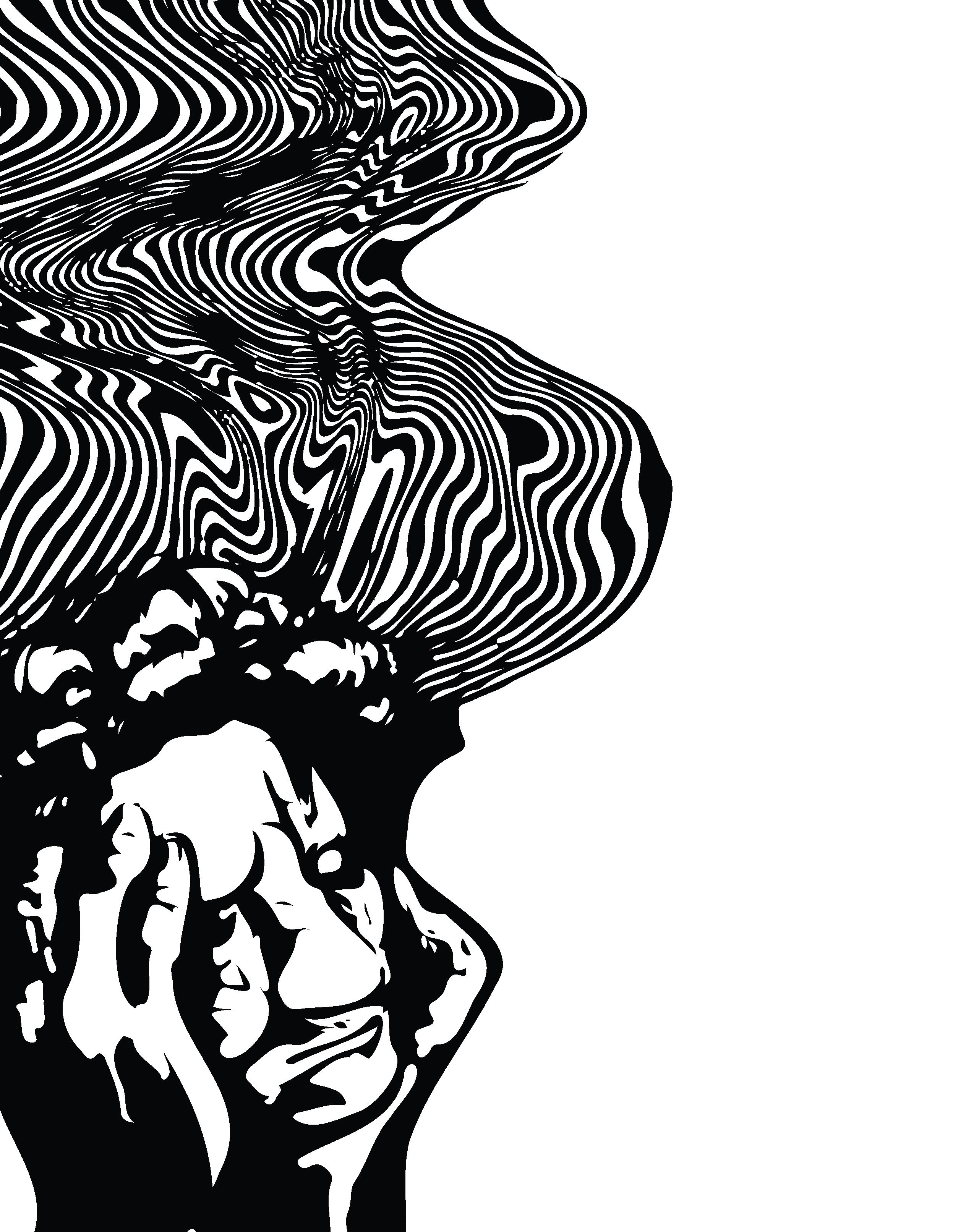
26
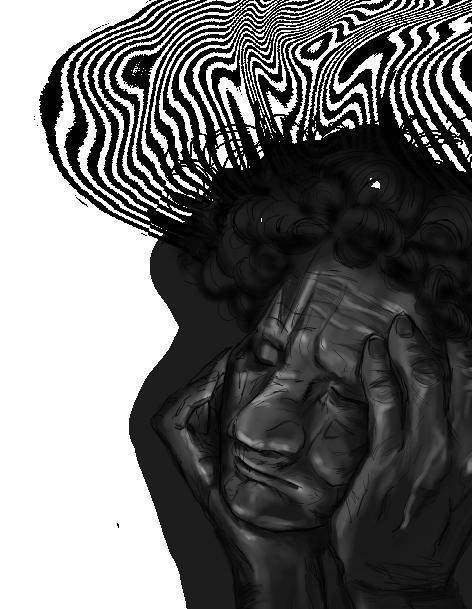
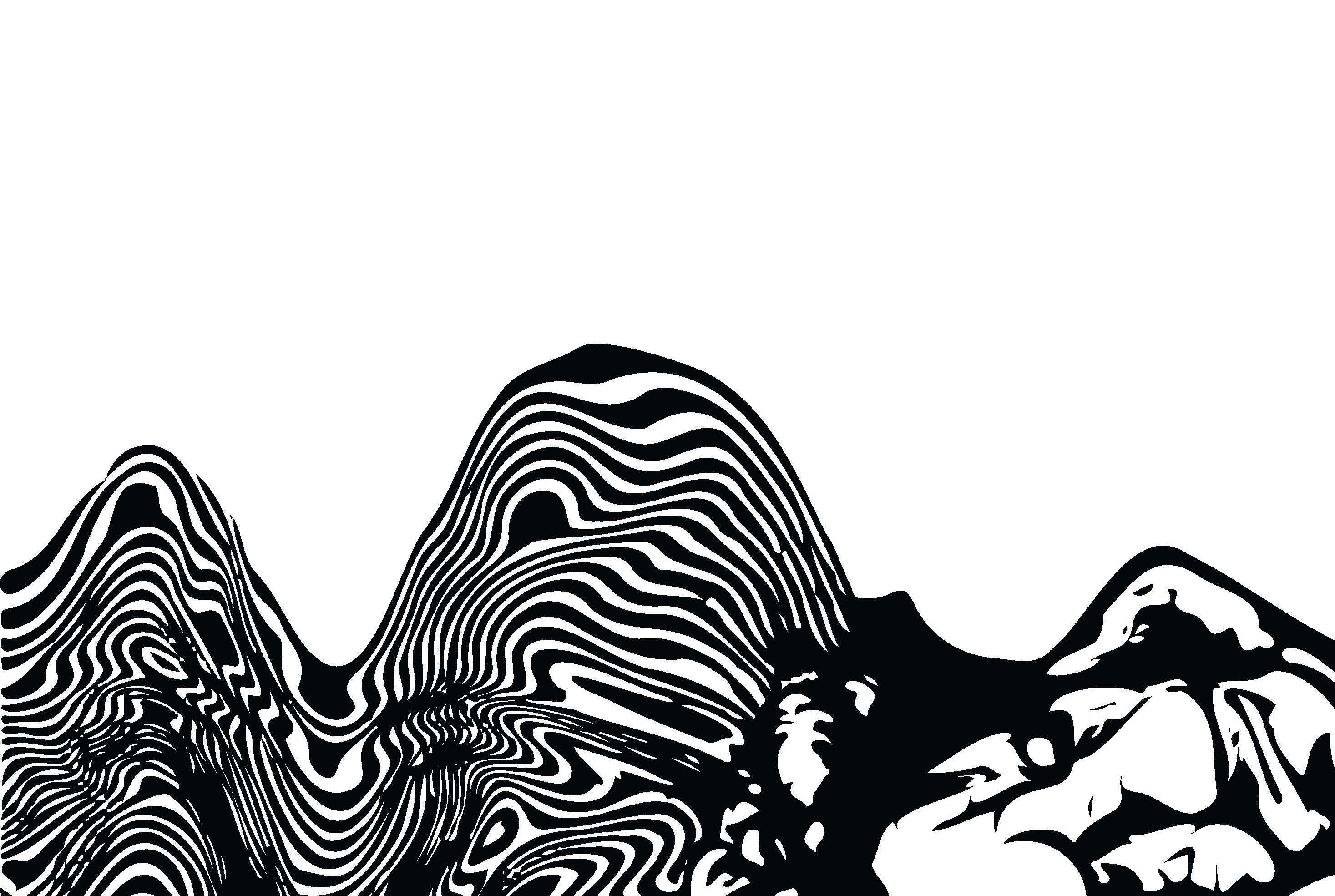
The Impossibility of Authenticity
 by Isabella Broccolo
by Isabella Broccolo
Thesearen’t easy questions, but they are the silent and ever-looming ones we are asked in our late teens and early 20s, a time when we are supposed to be figuring out who we are and what we want our place in the world to be. We are encouraged to dull the voices of others around us and get in touch with our own voice. I know I have spent many sleepless nights desperately hoping that, through enough introspection, I’ll meet the person I am at the very core of my being. My authentic self. In my quest for authenticity, I have learned one thing to be true: the “authentic self” doesn’t even exist.
Let’s unpack that.
First, we need to define authenticity. Oxford defines au thenticity as the property of being genuine, real, and orig inal, but this definition is nebulous and easy to miscon strue. When we think of an authentic person, we usually think of someone who is strange, but brave in their ability to reject what is mainstream. Maybe a punk, metalhead, or goth. This is, I think, a misconception about what au thenticity is. Authenticity is not uniqueness or individu ality, it is the idea that a person is presenting themselves in a way that is fully devoid of external and societal in fluences. Authenticity is not rebellion, because rebels are
Who are you? Are you being true to yourself?
28
often influenced by one another.
I think that those of us who engage in subculture mistake authenticity for individuality more often than most. We think that people who enjoy mainstream media aren’t in touch with their “real” selves and that we must be more au thentic than them because we have invested time and ener gy into being different. In reality, being alternative doesn’t make you any more authentic or better than people who enjoy mainstream culture, and it doesn’t exempt you from external influence. Alternative cultures are just as subject to trends and societal influences as mainstream culture. Thinking about clothing makes this obvious.
We might think our sense of style makes us unique, but in reality, personal style is presented to us through the il lusion of choice. Every year, fashion trends fluctuate and things come and go out of style. What was once popular can be unpopular in a matter of years. If you are a human who wears clothes, it is impossible to avoid this trend cy cle. If you aren’t making your own clothes, you purchase them from some kind of store, which has curated a selec tion of clothes that they think will sell. The fashion industry chooses your clothes for you.
So authenticity is impossible, but I don’t think that’s a bad thing. I actually think the impossibility of authenticity is
freeing. It’s nice to know that it’s okay to like pop culture or that you don’t need to cultivate your own unique aesthetic if you don’t want to. You don’t need to go out of your way to make yourself different, to be worthy of individuality. Since external influences are inescapable, why not embrace them? Pick and choose what you want to incorporate into your life and leave the rest. Being proud of the sum of your parts and the different aspects of you is more rewarding than striving for authenticity that doesn’t exist.

29
Illustration by Kevin Foster
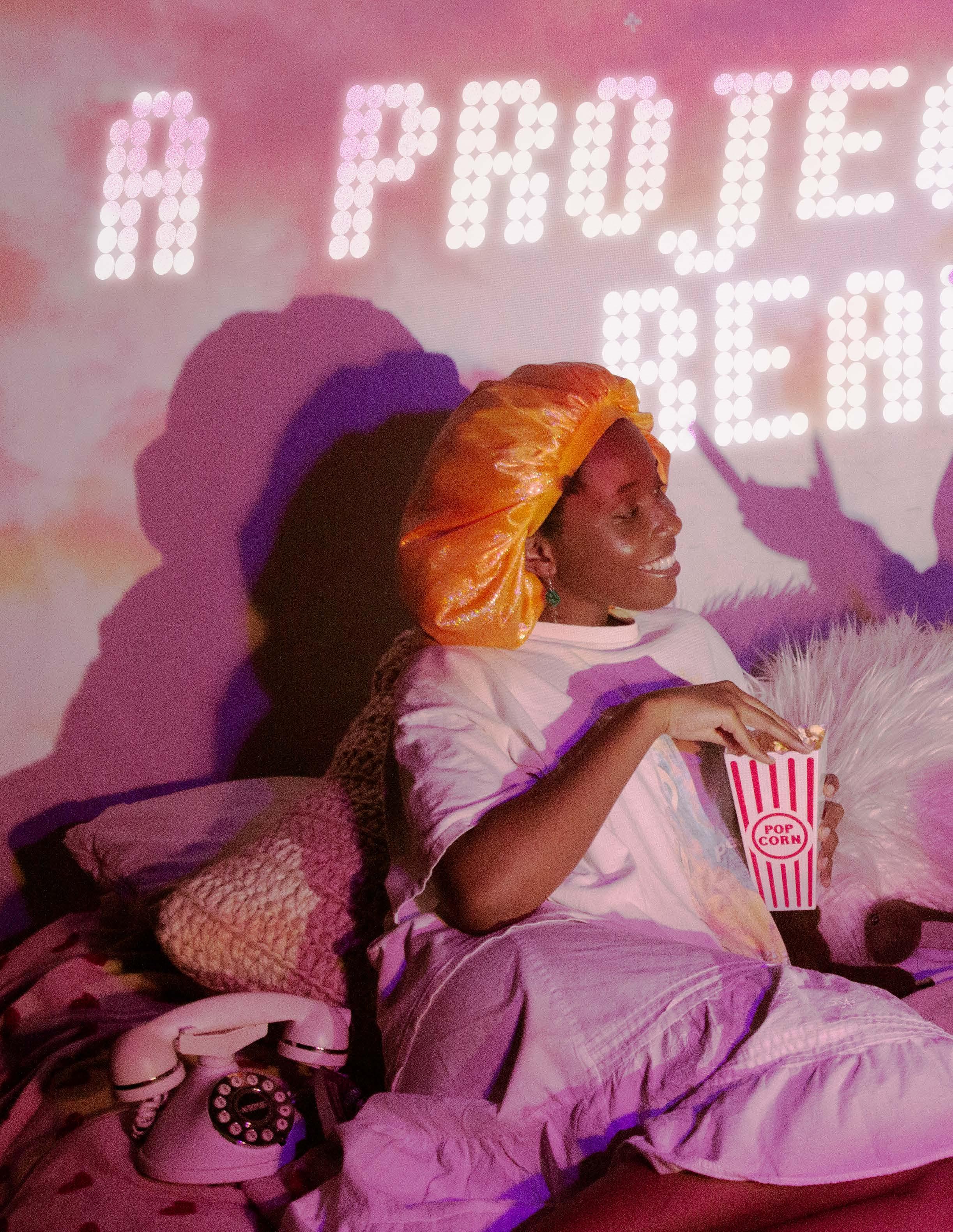
30
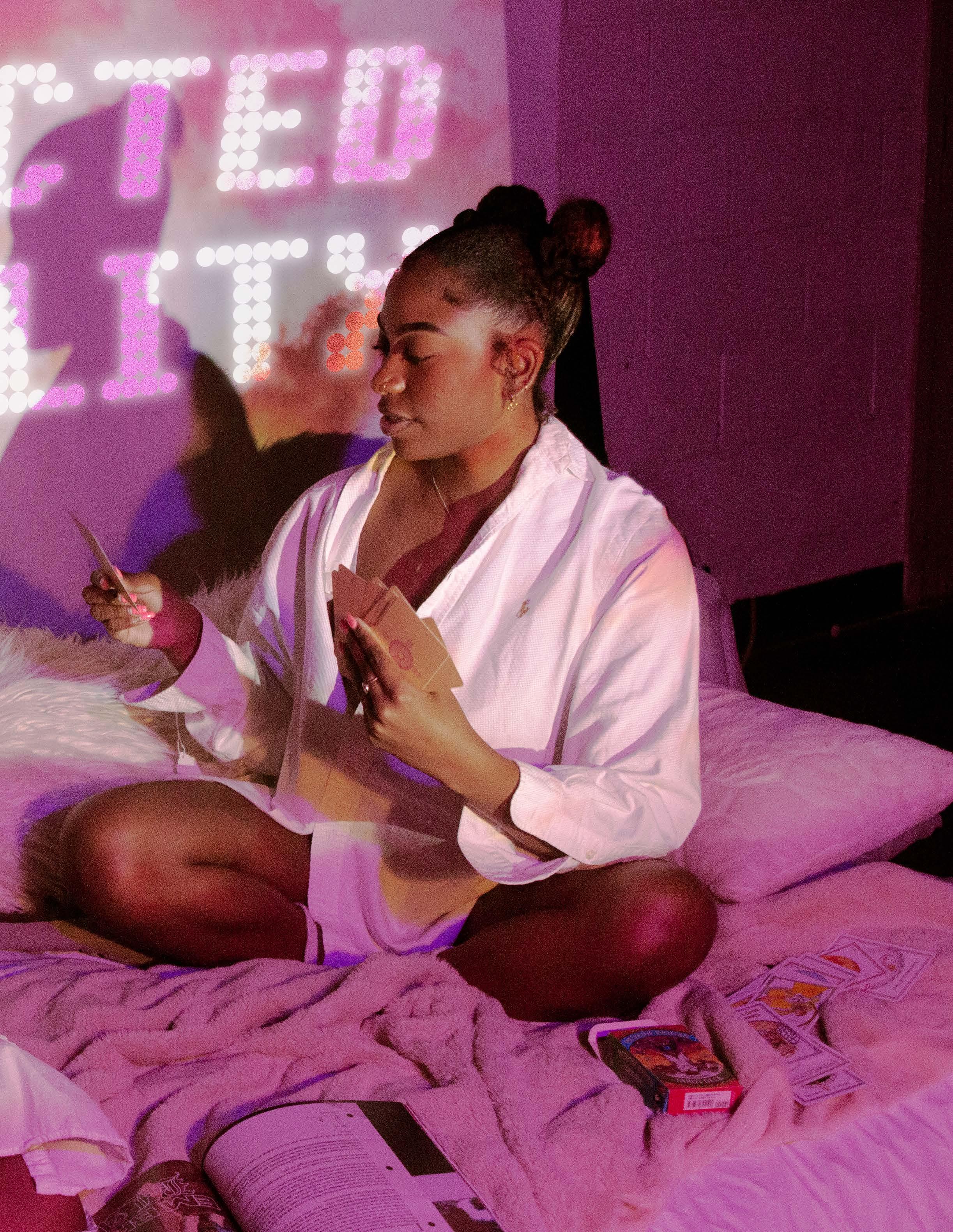 MODELS: Nyssa Ndey-Bongo & Jada Williams
PHOTOGRAPHY: Naima Sutton STYLING: Katie Holmstrom, Isaac Davis & Reagan Kurtz
MODELS: Nyssa Ndey-Bongo & Jada Williams
PHOTOGRAPHY: Naima Sutton STYLING: Katie Holmstrom, Isaac Davis & Reagan Kurtz
31
MAKEUP: Sophie Dickerson SET: Riley Warpula



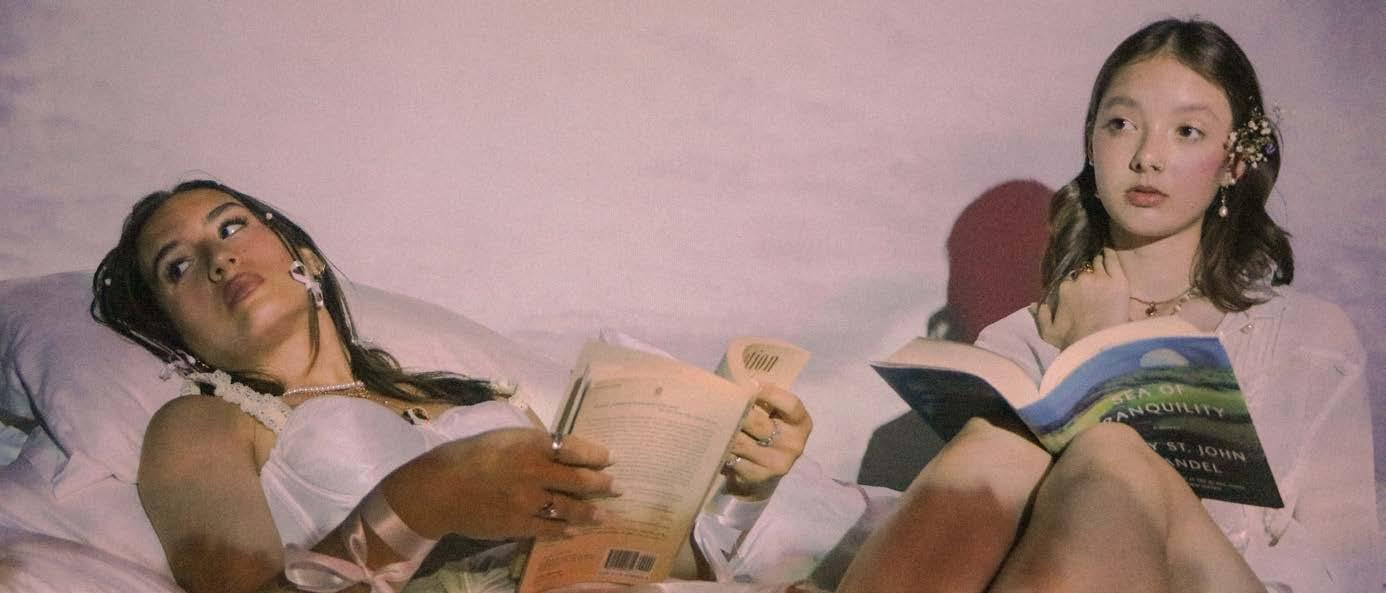
32

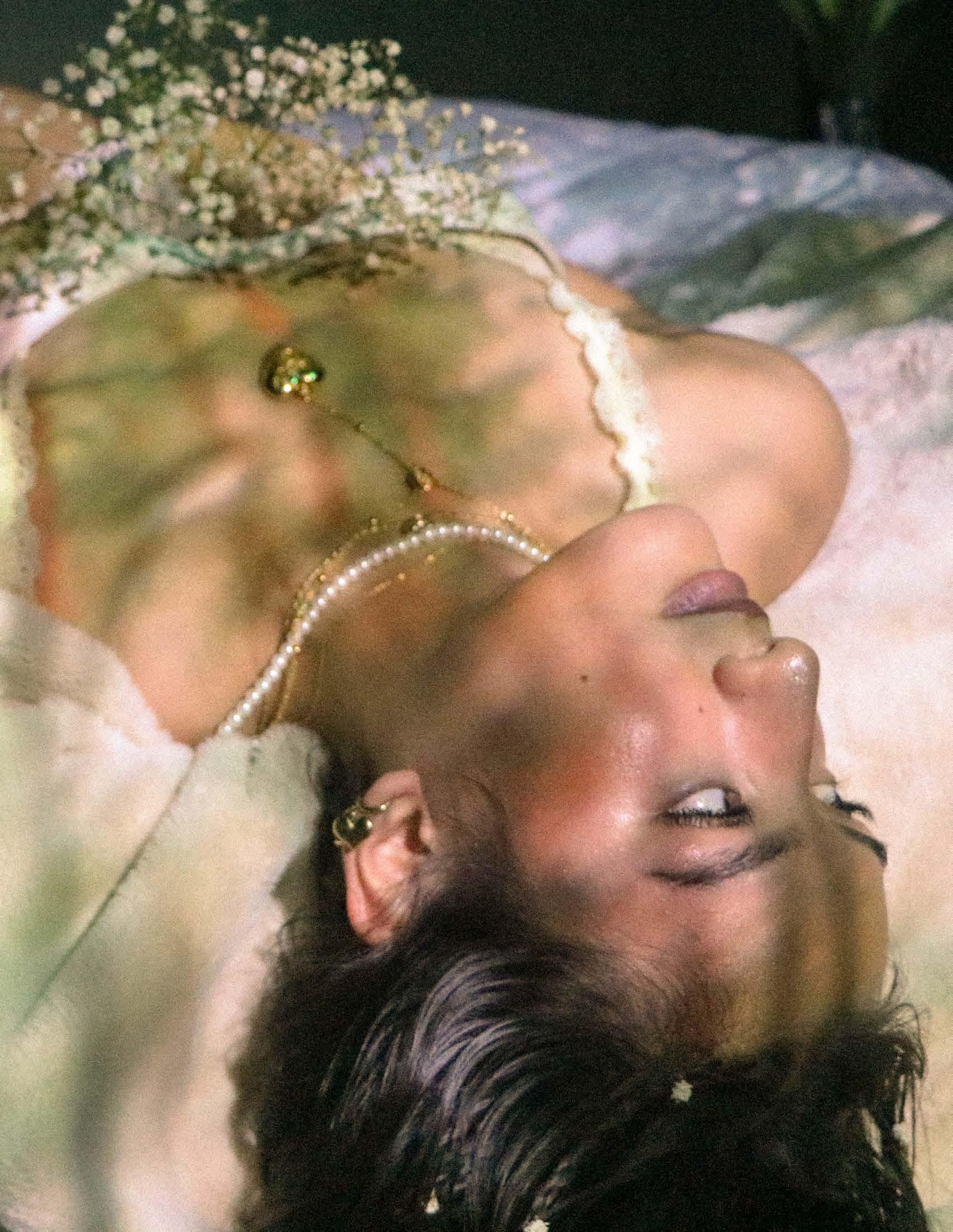

33
MODELS: Lindsay Carter & Claire Patrick
PHOTOGRAPHY:
Viosa Koliqi
STYLING:
Claire Daves & Lindsay Love
SET:
Sophie Dickerson

 MODELS: Nyssa Ndey-Bongo & Jada Williams
MODELS: Nyssa Ndey-Bongo & Jada Williams
34
PHOTOGRAPHY: Naima Sutton
PHOTOGRAPHY:
STYLING:

SET:
 MODEL: Stella Park
Natalie Folsom
Amaya Al-Mussawir
MODEL: Stella Park
Natalie Folsom
Amaya Al-Mussawir
35
Lilo Harris & Emma Sullivan
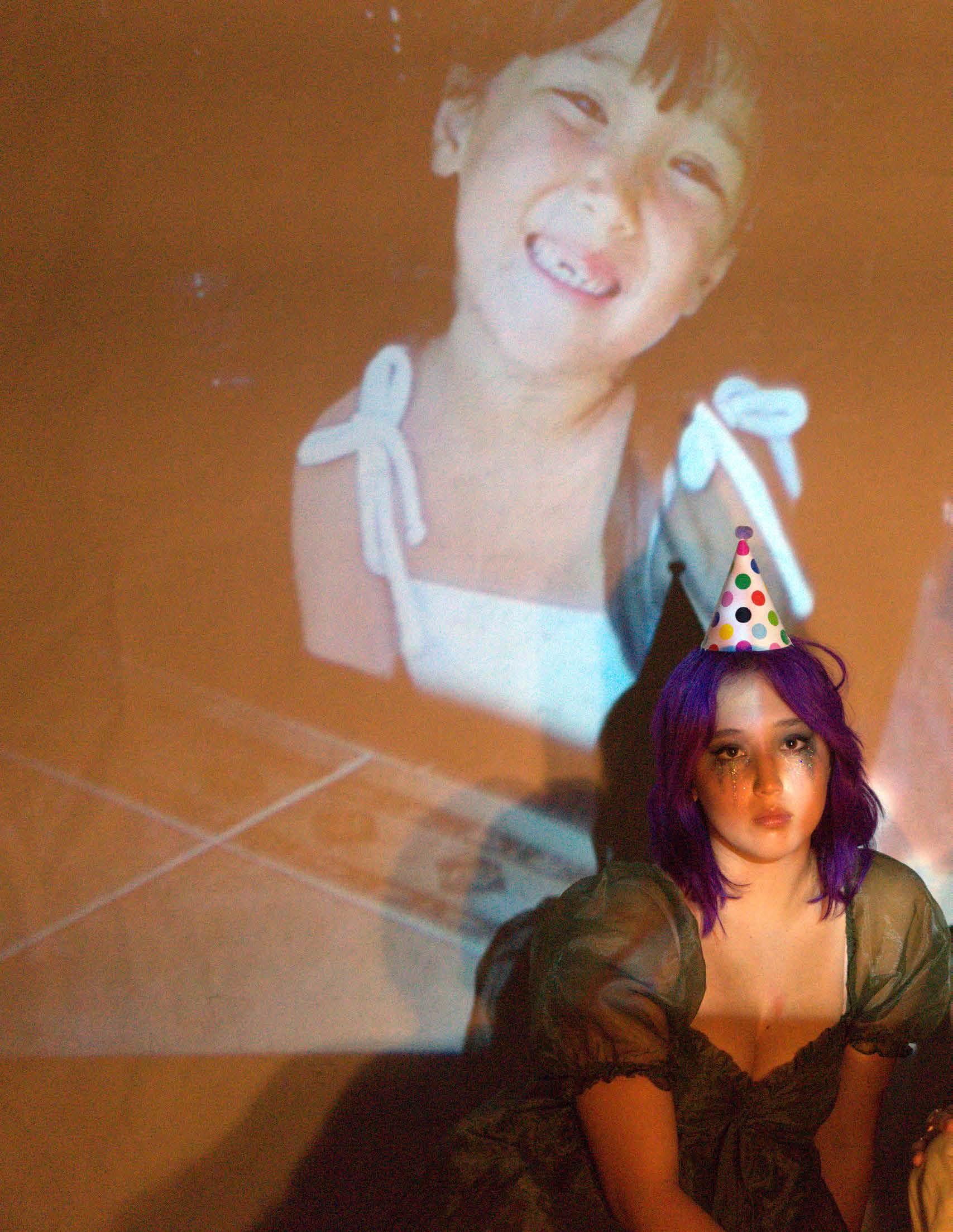
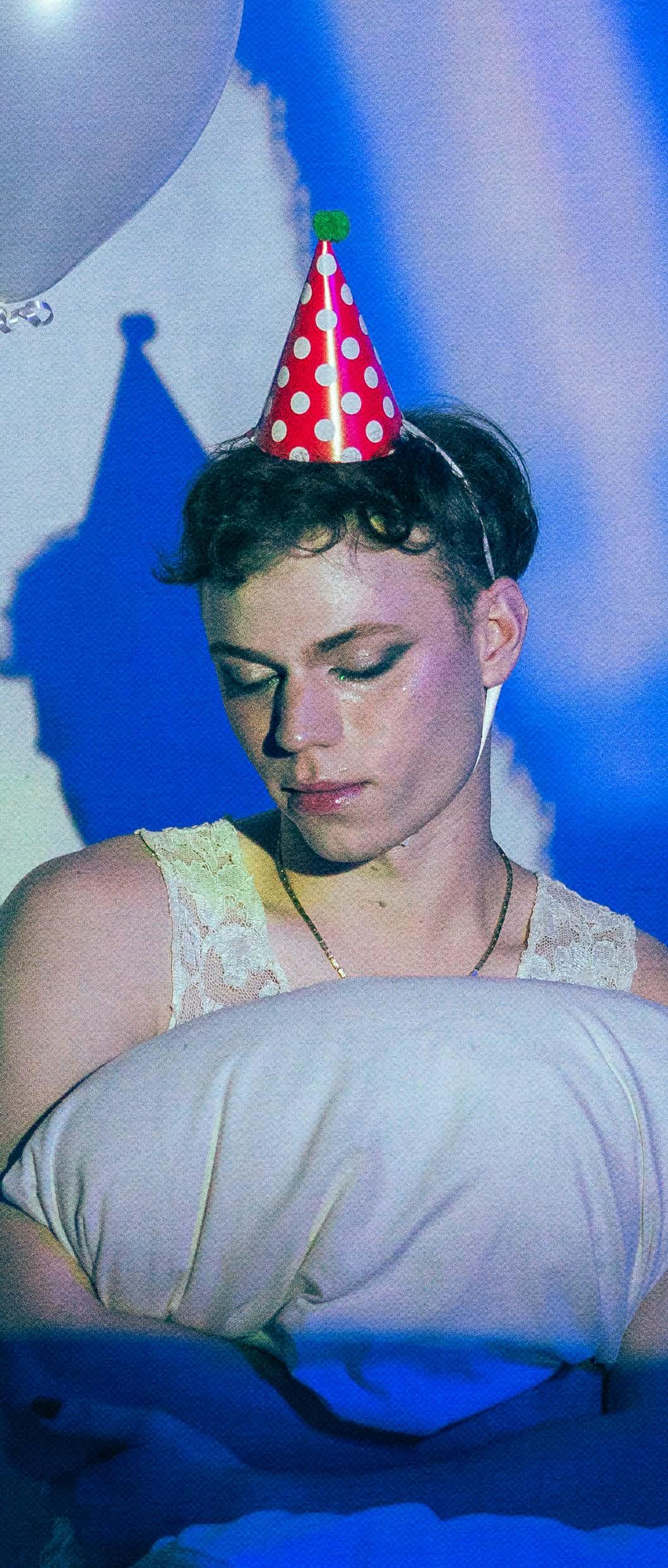
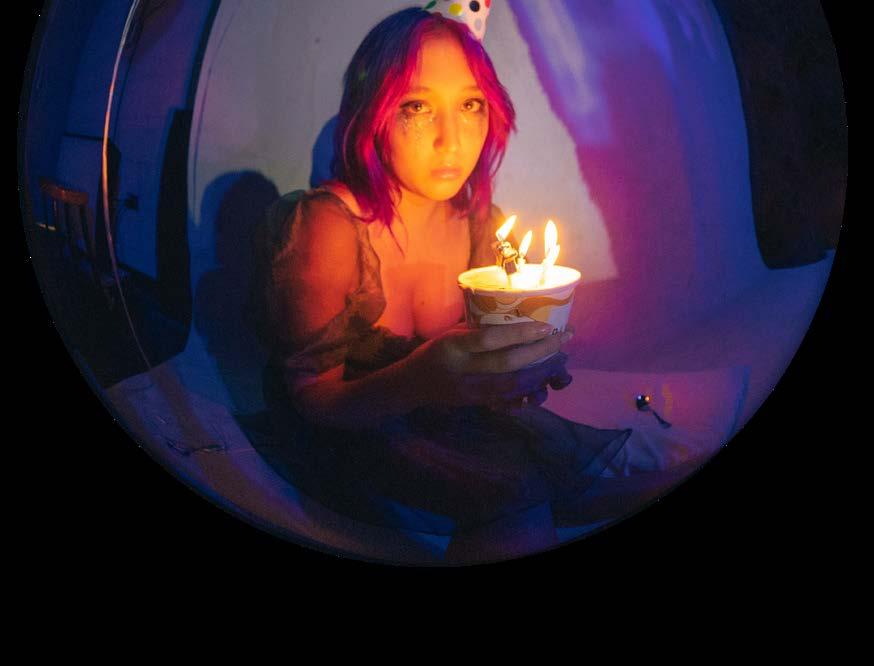
36
MODELS: Joseph Bunger & Elle Newkirk PHOTOGRAPHY: Rory Sullivan STYLING: Meghan Fickling & Anika Seward SET: Collin Lawrence
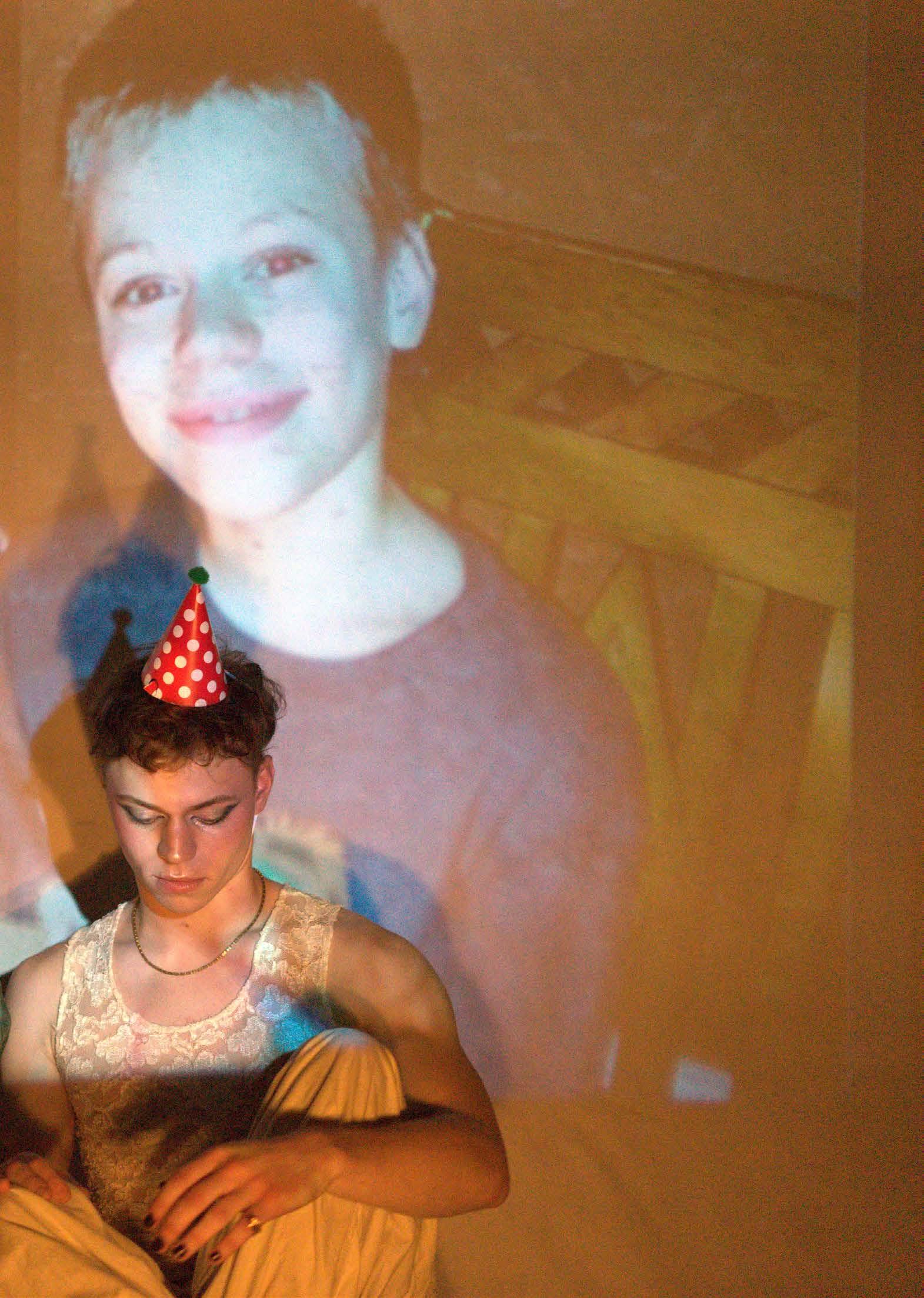


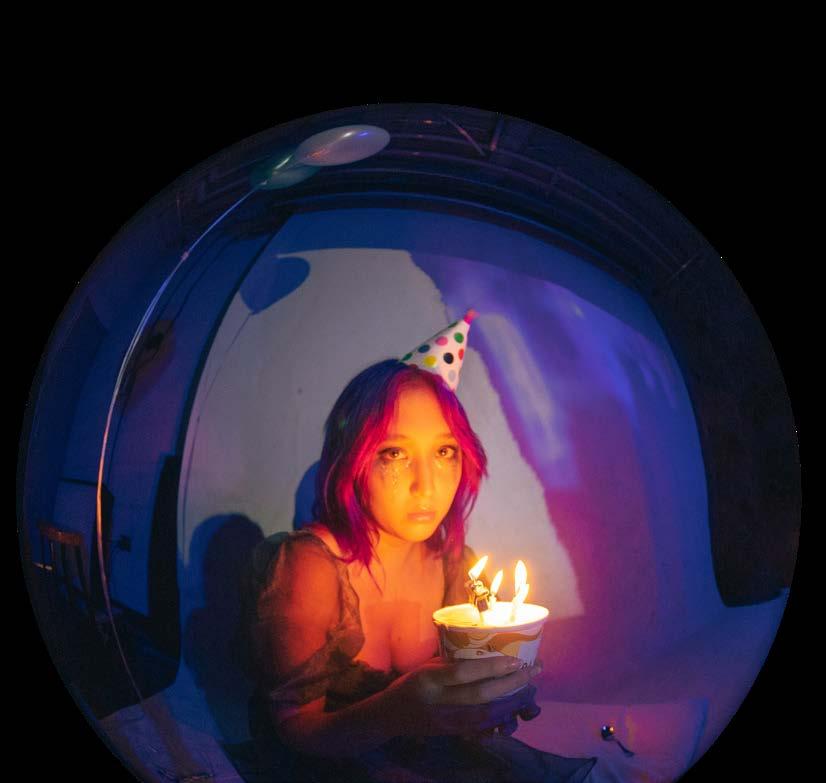
37
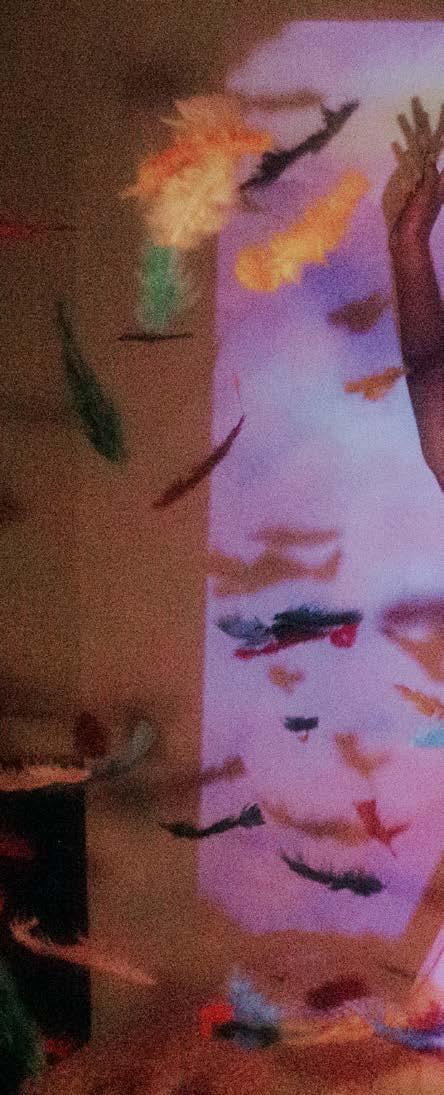


38
MODELS: Jadyn Keobouala & Stella Park PHOTOGRAPHY: Natalie Folsom STYLING: Amaya Al-Mussawir & Delaney Caulder SET: Lilo Harris & Emma Sullivan
PHOTOGRAPHY:
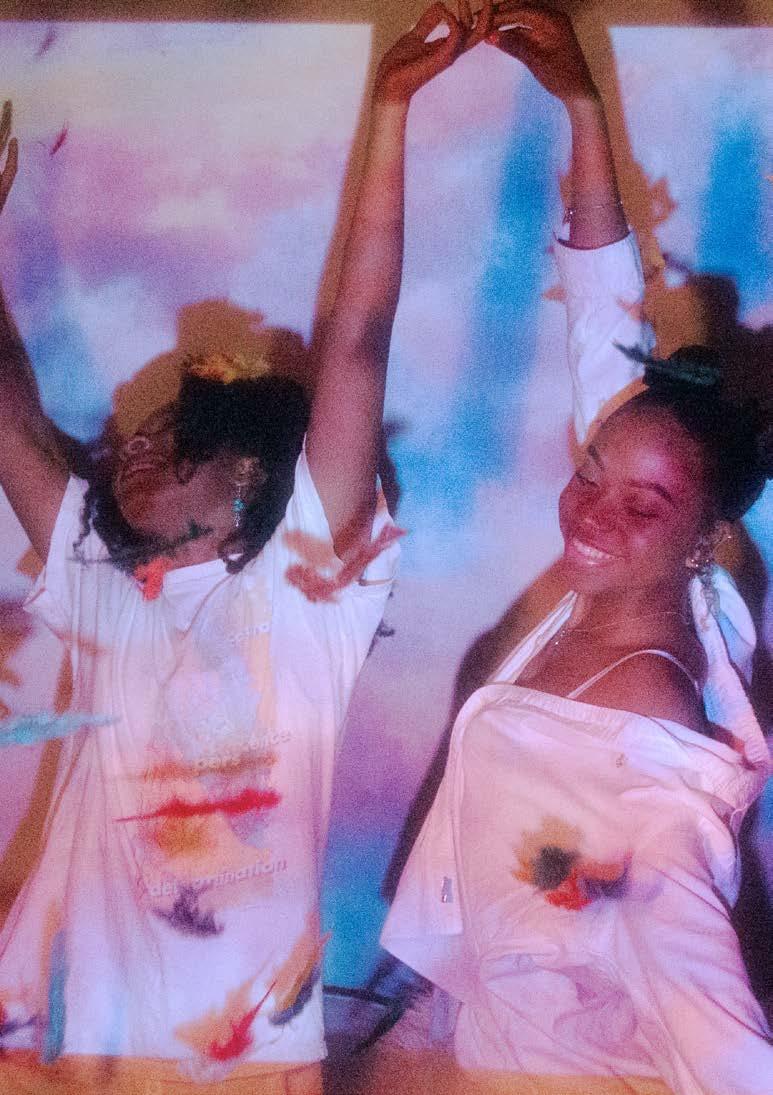

STYLING: Matt Chansombat

SET: Erin Secosky
 MODELS: Rayan Chaundhry
Sarah Jarrell
by Sloane Byrd
MODELS: Rayan Chaundhry
Sarah Jarrell
by Sloane Byrd



The term “It Girl” has always been popular but recently it has become a lifestyle that floods our social media feeds. Currently, the women that are coined as “It Girls” range from the likes of Emma Chamberlain to Lily-Rose Depp. But just what makes these women so interesting? Both women come from different backgrounds and have led very different lives, but have equally cap tured the attention of millions. Emma Chamberlain started out as a relatable teenager that shared her life on YouTube. She enjoyed thrifting and simply drinking cof fee, and although these may seem like everyday activities, she now has over 11.5 million subscribers. As for Lily-Rose Depp, she is known as one of TikTok’s favorite nepotism babies due to her father, Johnny Depp. Although she is fa mous in her own right, what really captured the attention of many is how she carries herself and the cloud of mystery that surrounds her. Based on what side of social media you are on, there have been many tutorials on how to achieve her signature makeup look or where to find some of her most iconic clothing pieces. Between the two girls, it is easy to see why they have captured the attention of many and why they have been coined the title “It Girls.” Is it because we see something in them that we see in ourselves or is it the fact that they have an aspect of authenticity that stands out to others?
These women may be some of the most prominent ‘It Girls’ of our generation, but there have been many that preceded them and have set certain expectations.
THE “
40
“
Throughout history, there have been many forms of the “It Girl,” which have inspired and influenced our current day version. Some examples would be the Gibson Girls of the 1890s, the flappers of the 1920s, or the introduction of the supermodel in the 80s and 90s. When looking at the previ ous examples, it is interesting to draw similarities and dif ferences between what made someone an “It Girl” and what made them interesting. Naomi Campbell and Kate Moss are a few examples that come to mind. Similar to Emma Cham berlain, they started out as normal people but gradually be came household names, but one drastic difference would be the lack of social media in their primetime. Naomi and Kate were looked up to by millions, whether it was due to their influence on fashion or their iconic friendship. Their faces


41
Illustration by Kat Barnabei
THE
Y’allternative
Aesthetic & the Changing Face of the Modern South
 by Klarissa Kronschnabel
MODELS: Kennedi Hosey & Aiden Tampton PHOTOGRAPHY: Maya Mitchall STYLING: Tyler Smith & Braxton Hare
by Klarissa Kronschnabel
MODELS: Kennedi Hosey & Aiden Tampton PHOTOGRAPHY: Maya Mitchall STYLING: Tyler Smith & Braxton Hare
Demonias
and Cook Out. Carhartts and crop tops. Multi-colored mullets. The y’allternative aesthetic is here to stay. While traditionally a term applied to the combination of alternative and western wear, y’allter native is much more than a glorified goth cowboy mo ment; it is an aesthetic grounded in the cultural realities of the South.
Broadly speaking, y’allternative is the emergent com bination of familiar staples of Southern youth fashion (college football t-shirts, workwear, flowing dress es) with alternative pieces (mesh, chunky platforms, chains, bold makeup). It’s a trend that is localized in the South and participated in mainly by those in their teens to mid-20s. Due to its young member base, the y’allternative aesthetic com municates important truths about what it means to grow up in the modern South.
The role of consumption within the y’allternative scene illuminates the complex relationship many young South erners experience with consumerism. The al ternative aspect of this aesthetic relies on access to trendy pieces, which are difficult to find in the South unless shopping in a specialty marketplace. As a result, many participants turn to online shopping, es pecially from affordable over seas retailers such as Shein and Amazon. However, this aesthetic also relies on elements that are thrift ed, inherited, repurposed, or otherwise obtained locally. These pieces tend to evoke specific places or regional, cultural memories–think an uncle’s ‘82 NASCAR shirt. This conflict between glo balized consumption and locally-based sustainability is at the heart of the aesthetic, and on a wider level, at the heart of its participants.
The seemingly opposed points on which this style rests–Southern fashion and the studded, alternative looks associated with Northern and European cities–demonstrate another struggle woven into the fabric of y’allternativism; that of young people who inhabit both the international community of the internet era and Southern small town life. Y’allternative is, therefore, a style that demonstrates knowledge of two parallel worlds–the horse fields and humid summers of its par ticipants’ hometowns, and the concrete, cosmopolitan cities which beckon them away. The ideal di rection for young people inhabiting rural areas always seems to be away; away for college, away for a job, away to make something of one’s life. Y’allternative represents a de sire that the practices of one’s hometown are not lost in this transition.
Ultimately, the y’allter native aesthetic can be viewed as a snap shot of contemporary Southern youth. It is the collision of Appa lachia and the chang ing world around it; inherited work coats layered over $5 Shein tops, faded 4H tees worn by boys in black nail polish and silver earrings, and an kle-length, church-going skirts which reveal peeks of fishnet in the breeze. While the Southern small town is less likely to be glam orized than the gray streets of NYC, participants in the y’allterna tive aesthetic fight for the inclusion of their oft-unromanticized beginnings in the global fashion scene. It is a balancing act between the old and the new, the trendy and that which is dis carded. Participants in the y’allternative trend send a clear message: My future does not abandon my roots.

43
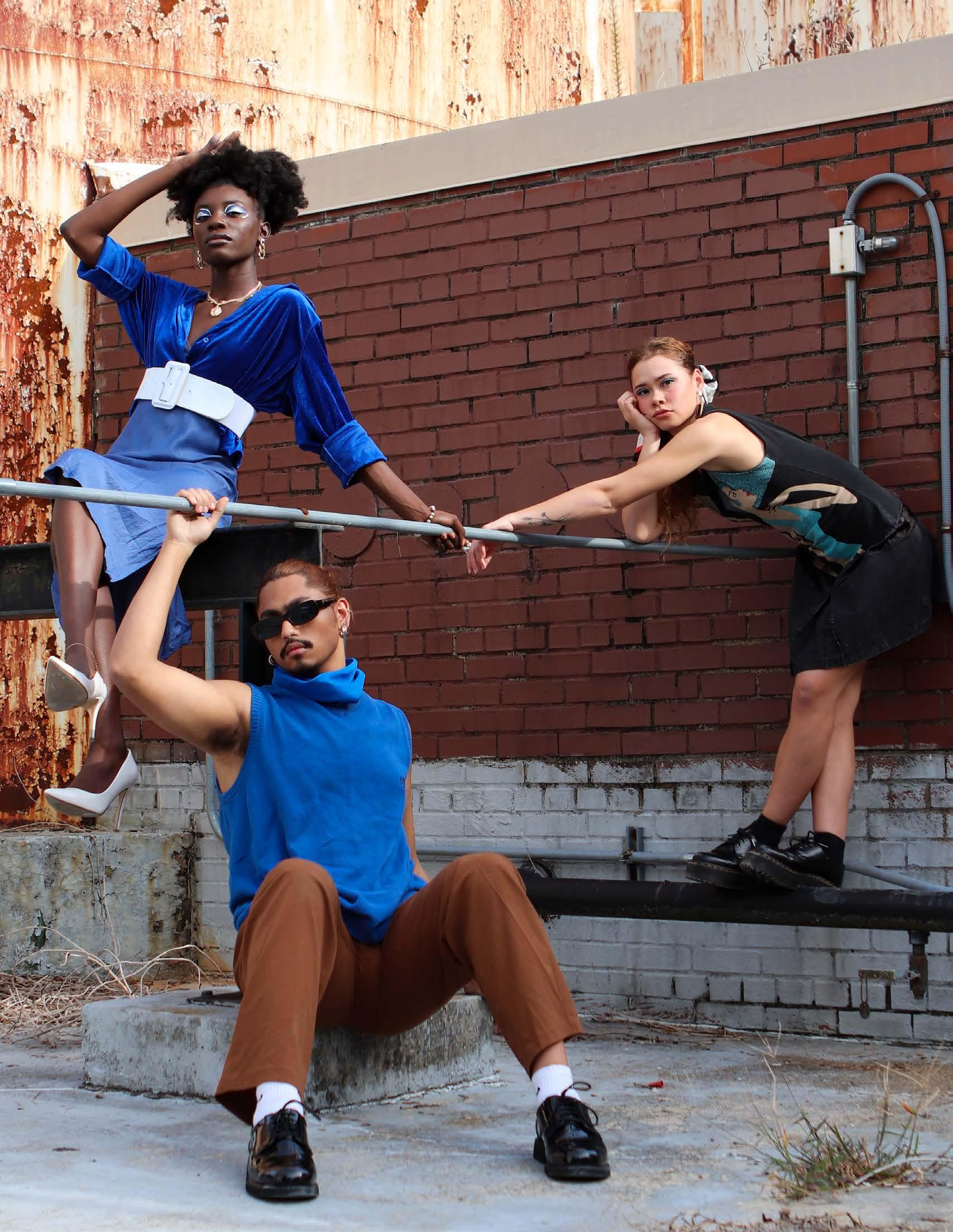
 MODELS: Hannah Simpson, Nadhir Sait, & Fidelise Paku PHOTOGRAPHY: Natalie Folsom STYLING: Lydia Mitchell, Sophie Timberlake, & Kendall Wisniewski SET: Katie Finan & Janey Harlow
MODELS: Hannah Simpson, Nadhir Sait, & Fidelise Paku PHOTOGRAPHY: Natalie Folsom STYLING: Lydia Mitchell, Sophie Timberlake, & Kendall Wisniewski SET: Katie Finan & Janey Harlow

45
MODELS: Kayla Hillman, Joseph Smith, & Aiden Tamton PHOTOGRAPHY: Maya Mitchall STYLING: Delaney Caulder, Tyler Smith, & Henry Tran SET: Janey Harlow & Anya Tadisina



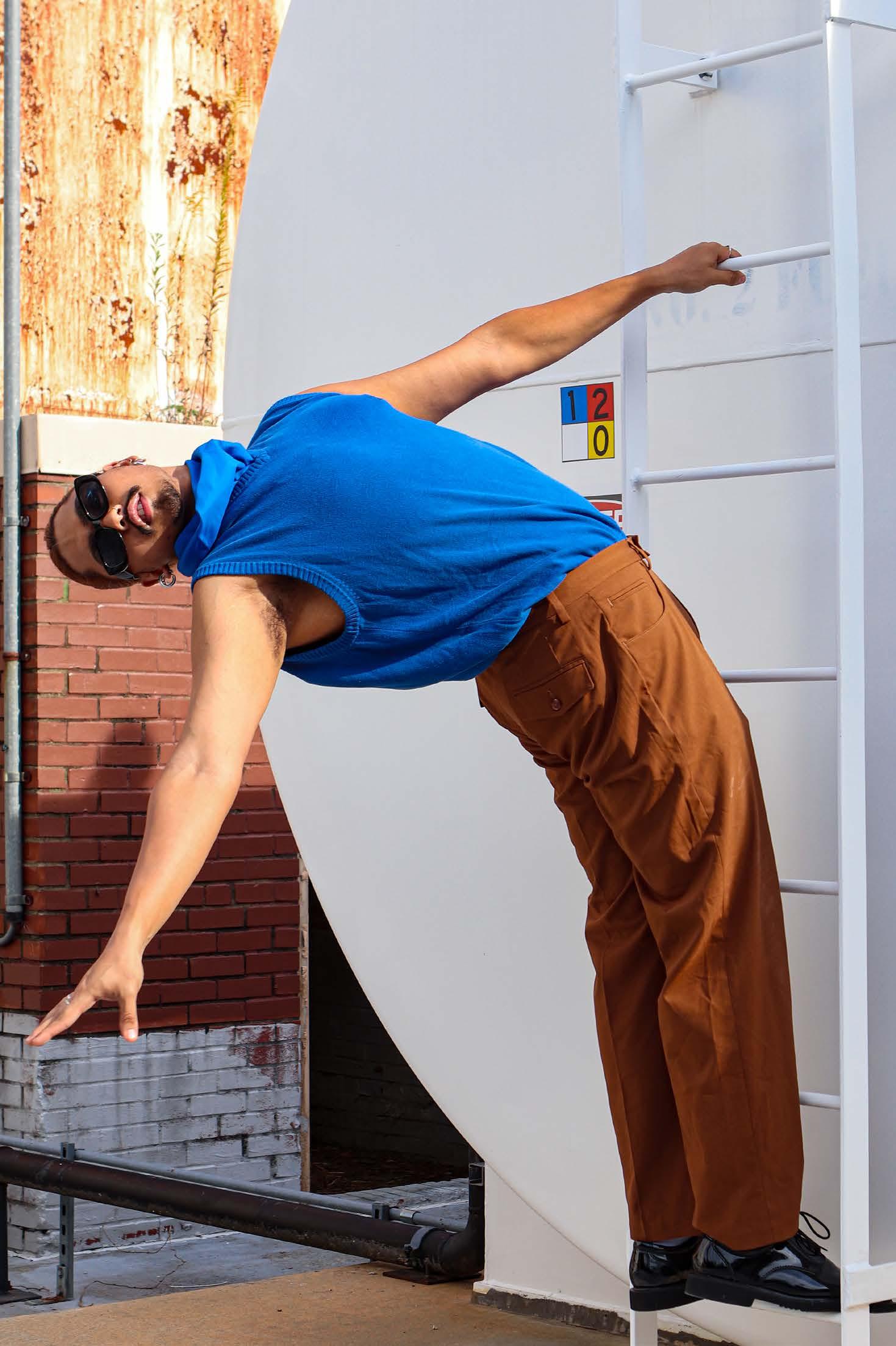


 MODEL: Hannah Simpson, Nadhir Sait, & Lara Yassin PHOTOGRAPHY: Natalie Folsom & Tae Park STYLING: Samantha Roncevich SET: Janey Harlow & Erin Secosky
MODEL: Hannah Simpson, Nadhir Sait, & Lara Yassin PHOTOGRAPHY: Natalie Folsom & Tae Park STYLING: Samantha Roncevich SET: Janey Harlow & Erin Secosky
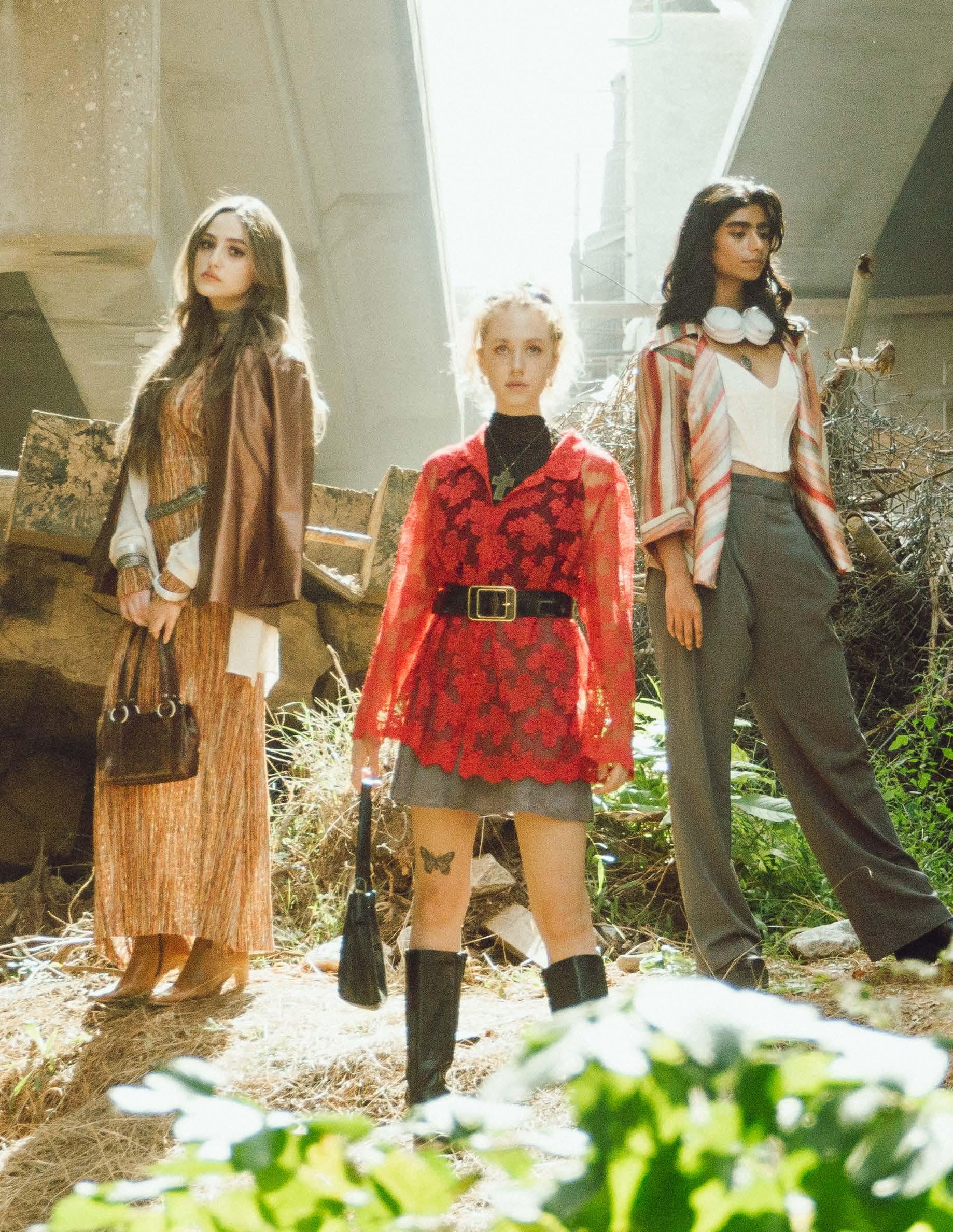 MODELS: Hannah Hatch, Swetha Natarajan, & Lara Yassin
PHOTOGRAPHY: Tae Park
STYLING: Lindsay Love, Nikki Miller, & Samantha Roncevich
SET: Janey Harlow & Erin Secosky
MODELS: Hannah Hatch, Swetha Natarajan, & Lara Yassin
PHOTOGRAPHY: Tae Park
STYLING: Lindsay Love, Nikki Miller, & Samantha Roncevich
SET: Janey Harlow & Erin Secosky




49
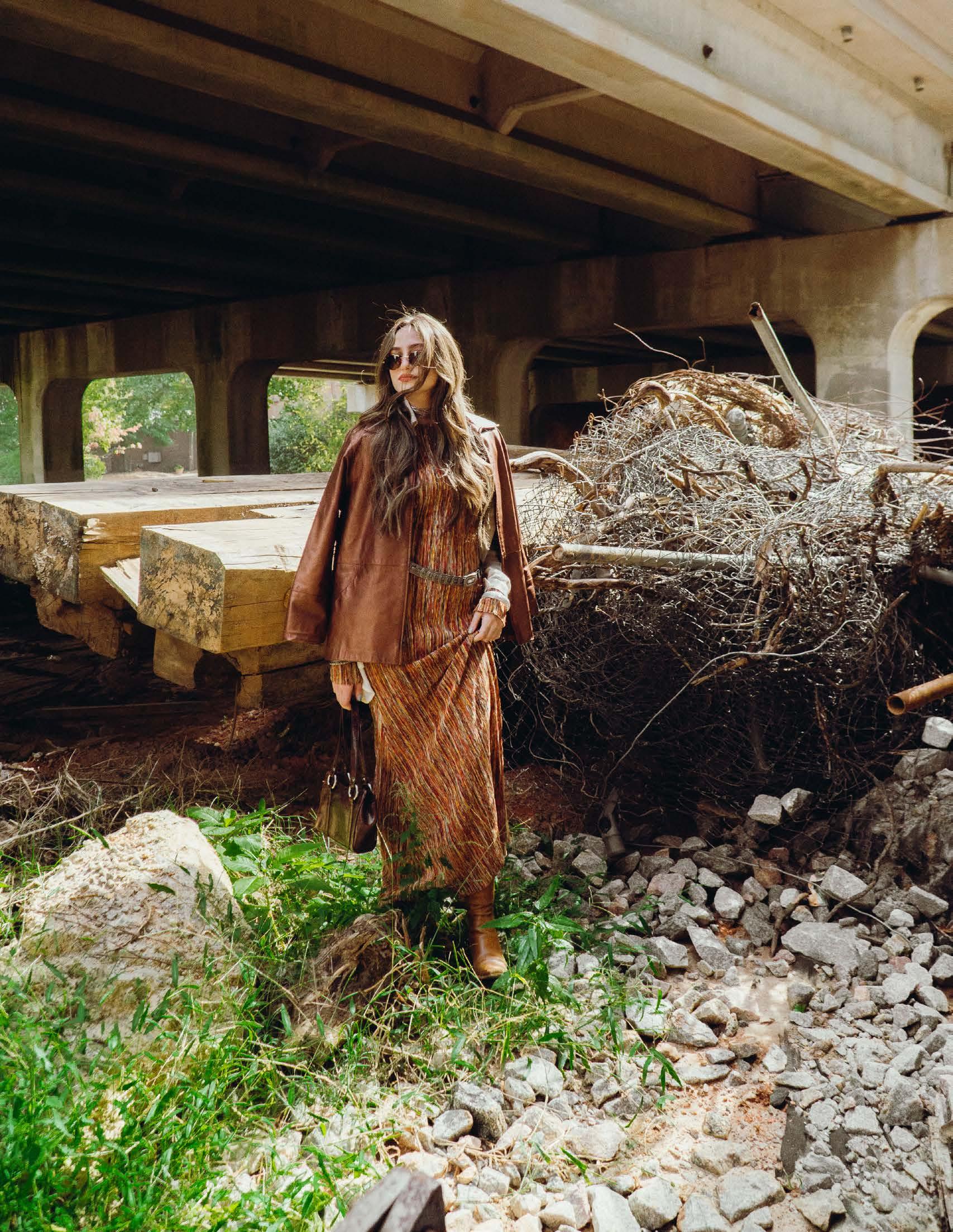
 MODELS: Justus Denizard, Jacob Hodges, Rachel Kelly
PHOTOGRAPHY: Taylor Wittig STYLING: Sydney Brown, Tanner Hamerling, & Liora Tal SET: Janey Harlow
MODELS: Justus Denizard, Jacob Hodges, Rachel Kelly
PHOTOGRAPHY: Taylor Wittig STYLING: Sydney Brown, Tanner Hamerling, & Liora Tal SET: Janey Harlow
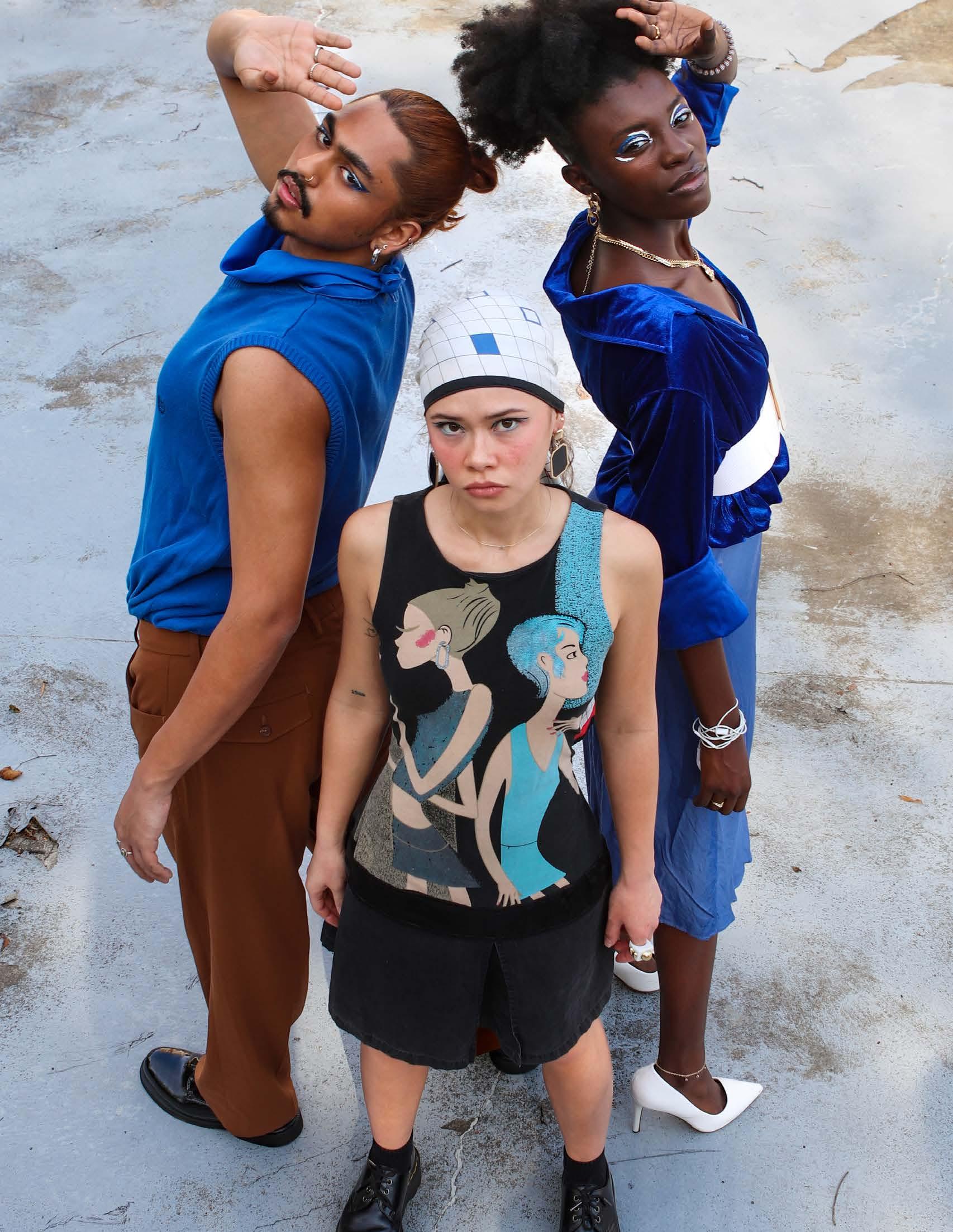
51
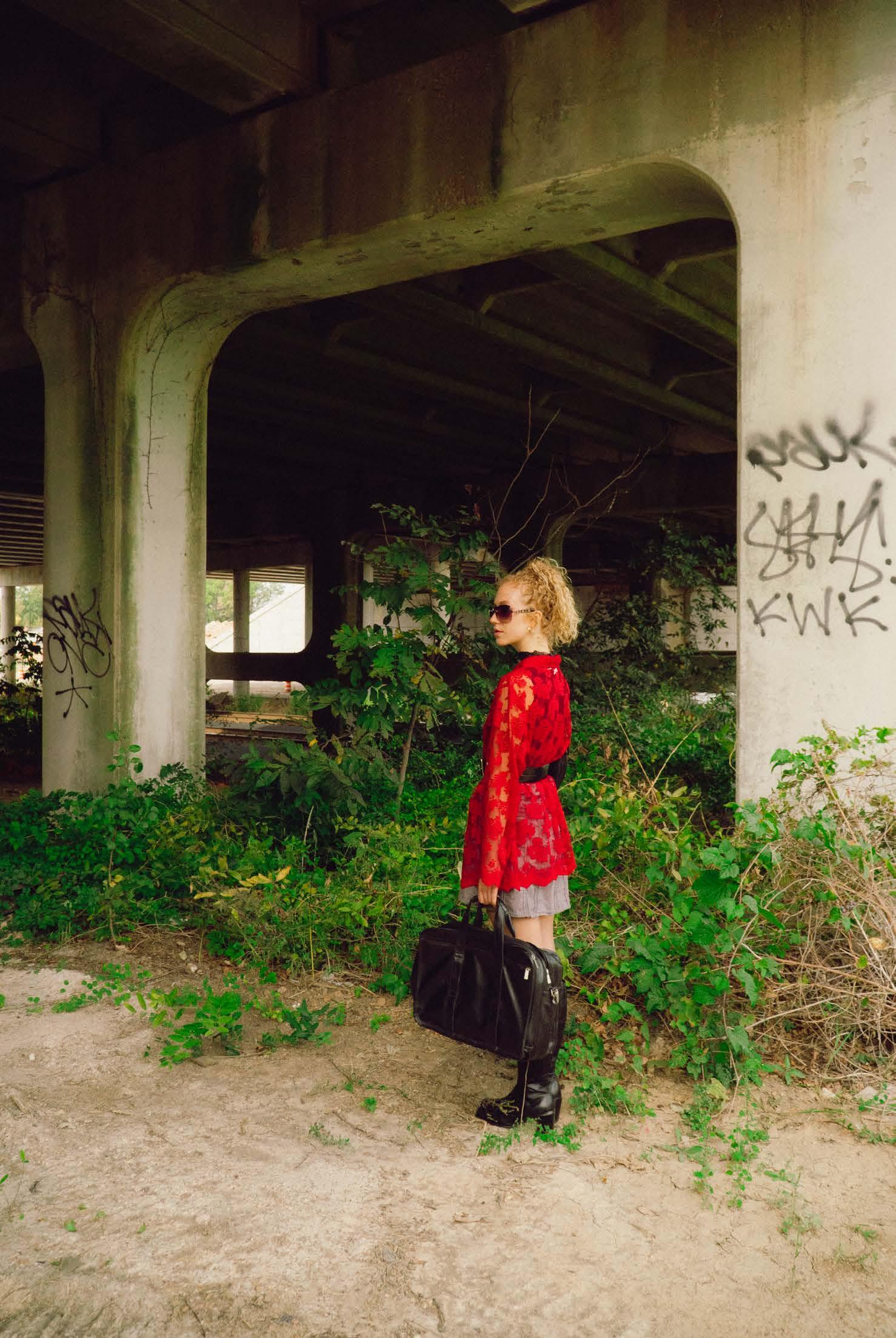


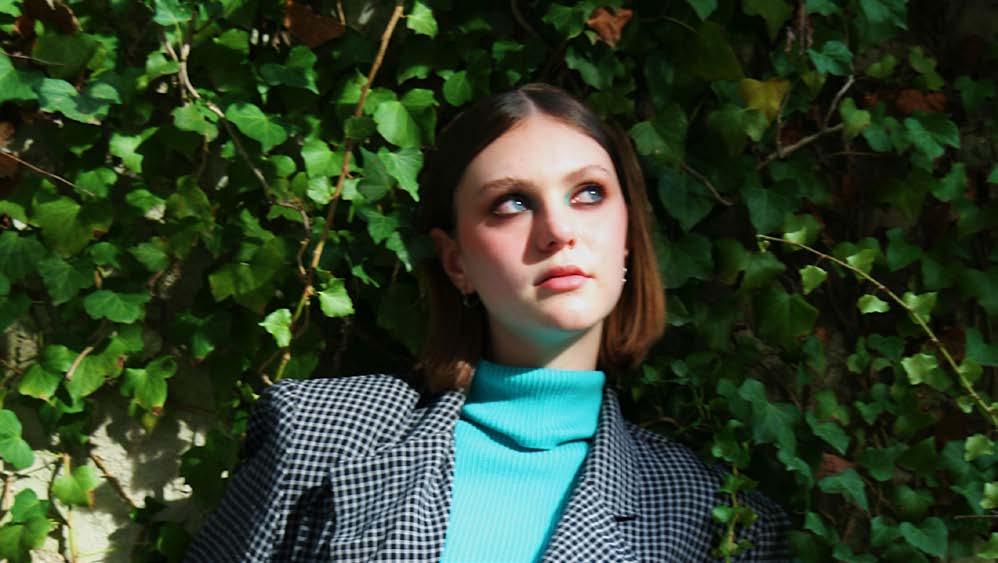

53
by Mae Williams

54
Isit
down to watch six friends live out their city dreams while making a coffee shop their home. The show is Friends, and Chandler, Joey, Monica, Phoebe, Rachel, and Ross get me through the day. Falling into this seemingly affordable New York City realm, I begin to wish my life was a sitcom. Through the comfort of watching Chan dler’s corny jokes, I wonder if television is more than a good laugh. In a time of change, I long for stability. I find it in Chandler and Joey’s friendship growing while raising a chick and a duck.
I press continue watching and my competitive spirit is activated as Monica’s win-all personality is in effect to keep the “good” apartment. Relating to characters helps us build our own personalities. As I relate to Phoebe’s quirks, I feel confident enough to express that goofy side of myself. However, a BuzzFeed quiz sees me more as a Gunther, the weird coffee clerk, so that’s flattering. Know ing that you share attributes with your favorite character boosts your self-esteem, but one can learn the most from the character they relate to the least. I love Phoebe’s free spirit, but if a deadline is approaching, Monica’s value of structure is what I’m in need of. Besides analyzing the characters’ personalities, we go through life with them as we continue to watch. Ross works on his anger, and I am reminded of the little irritants I had when my young adult siblings were living with our parents during quarantine.
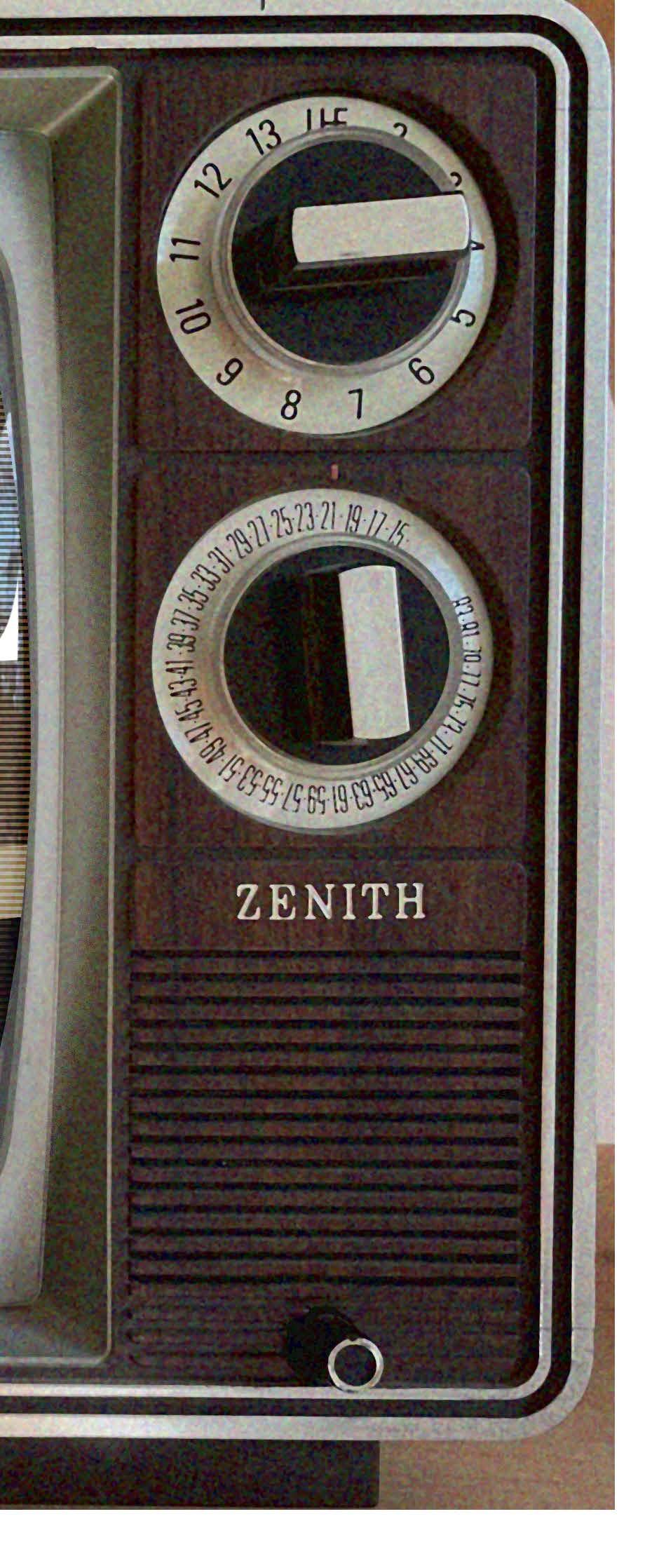
Throughout the binging, I am reminded of the impor tance of fashion. Rachel just got a job at Ralph Lauren, and I begin to wonder how her love for fashion on screen, translated to the real world. She was constantly dressed in a baby tee and denim, a staple in the majority of ward robes today. When making a nineties mood board, it is hard not to feature Rachel Green. Costume design en hances characters, which provides inspiration for view ers. Inspired by these looks, viewers can show their own personalities. Whether it is a simple tee with your favorite team on it, or an eclectic outfit (like Phoebe Buffay), one shows their personality by getting dressed for the day. This is not just fiction where Rachel decides the trends at Ralph Lauren. Fashion is not shallow, nor is film. Creative expressions on and off the screen bring joy to this somber world.
My to-do list is at the back of my mind as I watch Joey miss another audition. I am numb for a moment. I worry about fitting in, so I turn to six friends to keep me com pany. I escape further into a world with Central Perk, and my stressors grow smaller. Sitcoms and other creative ex pressions, like an “in your feels” playlist, get us through our toughest days. Suddenly, I watch Monica and Chan dler move to the suburbs. As the friends say goodbye to their apartment, I say goodbye to a chapter in my life. The continue watching title turns into watch again.
55
Interstitial States: Fashion & Product Passports
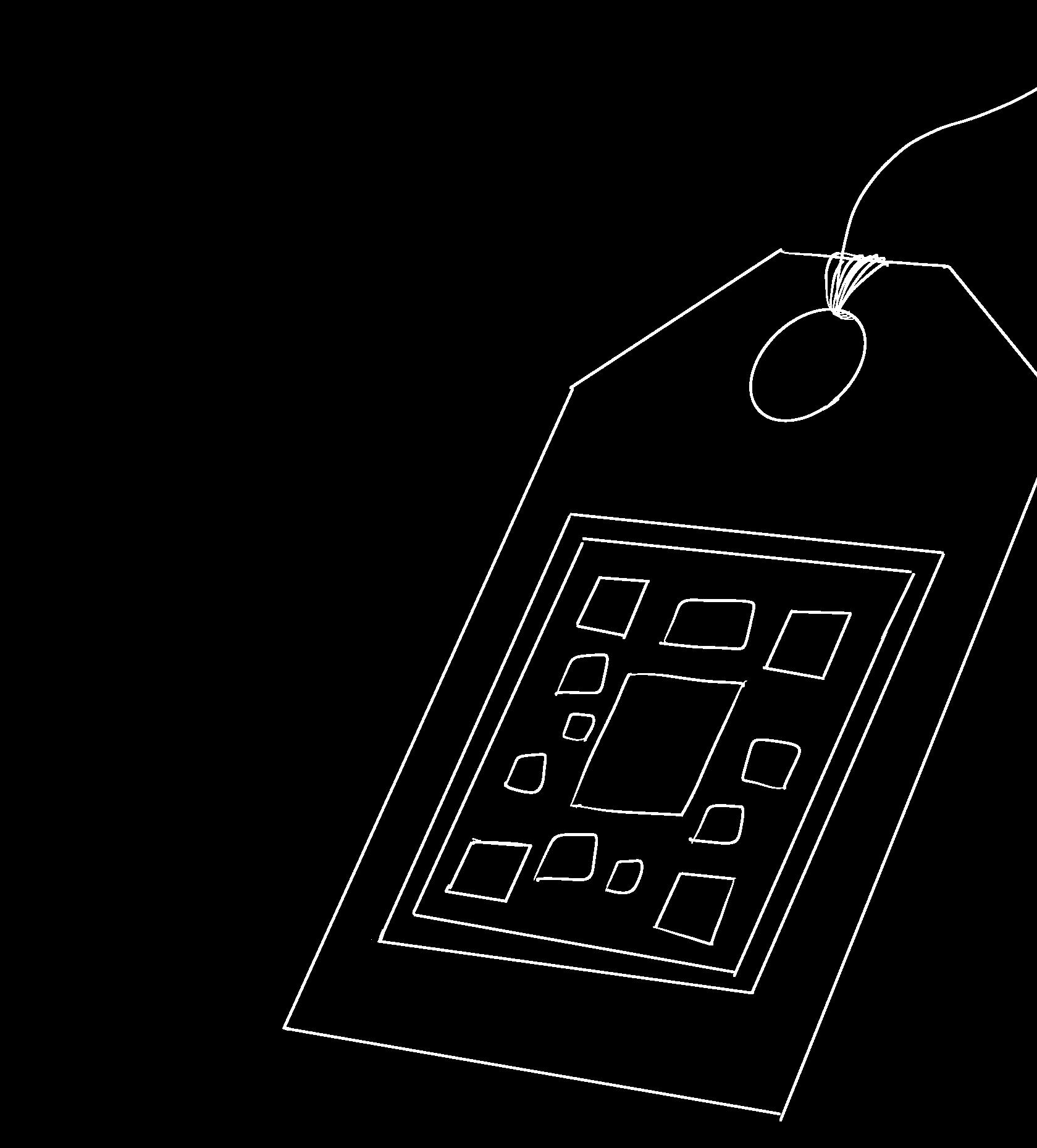 by Omia Haroon
by Omia Haroon
Thepost-retail life of an article of clothing typical ly ends in a landfill. From product purchased to waste squandered, the in-between constitutes misinformation, ignorance, and apathy toward what to do with clothing and where it ends up. Clothing brands advertise their reuse and recycling efforts while harvesting more raw materials and producing more clothing than ever before.
Consumers are expected to research and understand the implications and responsibilities that accompany their purchases, whether that be the ethics of production or en vironmentally conscious aftercare. In our current situa tion, there is no feasible solution to the immense amount of waste the fashion industry produces, that disrupts both local economies and worldwide ecosystems, without con fronting the life of clothing after it leaves a store or ware house.
McKinsey and Company, in collaboration with the Busi ness of Fashion, released a report last year, “State of Fashion 2022: An Uneven Recovery and New Frontiers,” detailing ten critical themes for the current year and the fashion industry. Of those themes, both circular textiles and product passports have a uniquely entwined fate.
Circular textiles, or closed-loop recycling, “limit the ex tractive production of virgin raw materials and decrease textile waste,” attempting to redirect textiles from land fills for as long as possible. Product passports digitally store and share product information regarding the arti cle of clothing, including accessible information for both brands and consumers that pertain to manufacturing and recycling. The passports could be in the form of a QR code, RFID (radio-frequency identification), and NFC (near-field communication), integrating the technology we already have. Alternatively, they could include and incorporate several new innovations and technologies. Knowing where a piece of clothing came from, how it was made, what it was made with, whether employees were treated fairly, and where to take it for reuse, is essential for circular textile economies. With product passports, that information can be stitched into clothing, easing the bur den off the consumer to do their own, potentially inaccu rate, research and instead, making the process accessible.
In March of this year, the European Commission initiated its strategy for sustainable and circular textiles. The over arching goals of the strategy aim to provide new design
56
requirements, clearer information on textiles, tighter controls on greenwashing, fewer accidental releases of microplastics, standardized EU rules on producer re sponsibility, and halt the exportation of textile waste. Under clearer textile information, there is a plan to in troduce digital product passports to provide “mandato ry information requirements on circularity and other key environmental aspects.” The growing relevancy and urgency of sustainable and circular textiles enable newer solutions like product passports to be implemented on
While product passports present an optimistic outlook for the fashion industry and closed-loop recycling, there are problems that could be exacerbated with their intro duction to the market. Without common standards en forced and regulated by a removed source, brands could deploy product passports as another greenwashing tool, playing up their participation in sustainable practices whilst citing product passports as a defense. Fashion companies prioritize both the brand authentication and customer loyalty that product passports can provide for their products, pushing for further consumption and diminishing their sustainable changes. Instead, the tech nology should be geared towards proportionally dis tributing the burden of environmentally conscientious production and consumption. If not like the European Commission’s regulatory action, product passports will become another business venture that attempts to max imize profits, from both product passport providers to the brands employing them. With any new technology, it must be connected to systems oriented towards utiliz ing product passports for their sustainable aspects, rath er than their exploitative potential.
The sheer amount of production from the fashion in dustry, requiring criminal exploitation of people and resources, subsequently makes clothing and fashion more accessible to consumers. Accessible information regarding products then becomes invaluable to mini mize the damage and initiate change. As fashion is ac cessed by more consumers, accompanying knowledge of implications and responsibilities promotes conscious and sustainable practices to both enact and advocate for. Product passports help navigate the in-between or “interstitial” spaces in the textile market. Inseparably stitched into an article of clothing, unlike a tag ripped off and thrown away, that information is tied to the gar ment. They account for clothing wedged in the purga tory of movement: donation, storage, or discarding. To save clothing from a premature end and redirect it to resale, repurposing and reuse promotes a circular textile industry.


57
Illustration by Keymoni Sakil-Slack
Notsubject to digital compression, You retain your warmth and originality. You are vibrant, clear, and sincere. Indicative of the past, You reject the future. So when I am craving simpler times, you offer me that nostalgia.
There is something ritualistic about you as well. The urge to discover, The drive to the local record shop, The sifting through endless dusty bins, The spark of interest I immediately feel when I stumble across you Then consciously choosing you,
The unwrapping of the packaging, The pulling out of the disc and observing of its texture, The analyzing of the cover art almost like I am at the Met, The reading and regarding of all the liner notes.
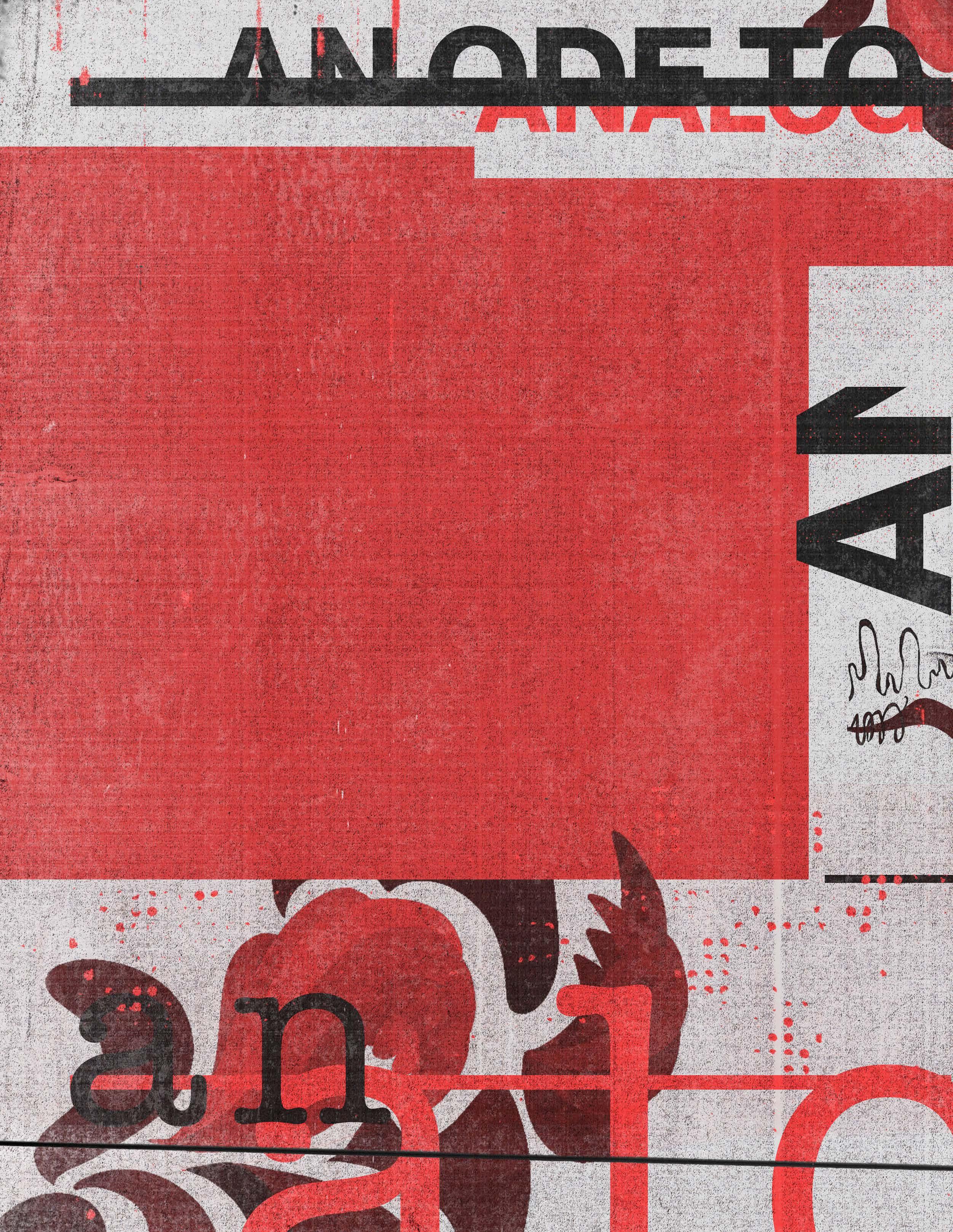
I open the lid on my player, appreciating the machine as a piece of art in itself, Then I place the record ever so gently and listen.
Purposefully listening, your music is dynamic to my ears and lyrics to my brain. Everything about this is intentional; Providing me with much more than typing into a search bar could ever give.
You are not merely something to distract me while I am walking or driving. You are a complete encounter that concludes with understanding and contentment.
You offer a moment in time to quiet my mind and simply be;
A way to decompress and destress in an increasingly digital world.
A means to detach myself from the online atmosphere, look up, sit, think, and feel.
You are visceral and instinctual, Representing what our modern culture is running away from: Imperfect production, authentic emotion, and humanity.
All to say, when the musical experience is tangible, I find extra comfort in its sound and a deeper connection to the storytellers.
There’s a community of those that appreciate the same sensation, And the mutual understanding between the people is staunch. It could be something about our psychoacoustics, the relationship of our subjective response to such sound, And we, on a fundamental level, experience sound differently?
But I think it has more to do with making up for what our society is losing.
As the digital landscape is homogenizing the music industry and music consumption, Opting for analog sound can be a protest
by Maddie Hall
statement to act outside of that.
Instead of simply searching Top-40 and enmass algorithm basedplaylists, People seem to want to discover on their own, As much as they can within this highly corporatized and marketized world. Attempting to partake in powerful and meaningful individualized consumption;
There’s a widespread trendy interest in reverting back to analog music currently, And although part of that may indeed be a manufactured capitalistic venture, I think there’s some truth behind it.
The general population continues to yearn for a deeper connection to their senses and spirit. Music is a universal artistic expression that presents this. Thus it makes sense that society would be drawn back to a purer experience of its sound; It’s one of the most valuable shared human experiences we have.
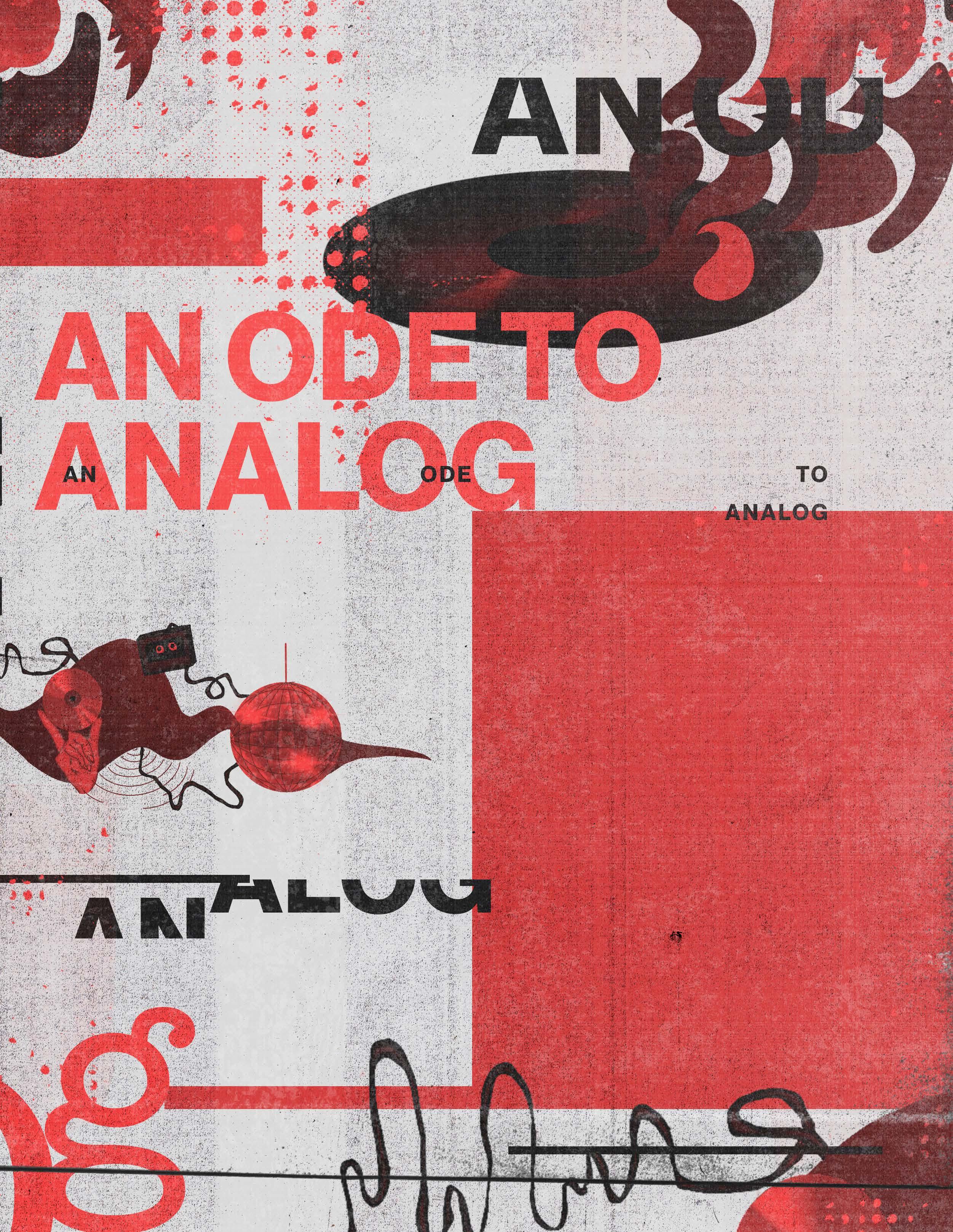 Illustrations by Chandler Lamm
Illustrations by Chandler Lamm
OUR SCENE


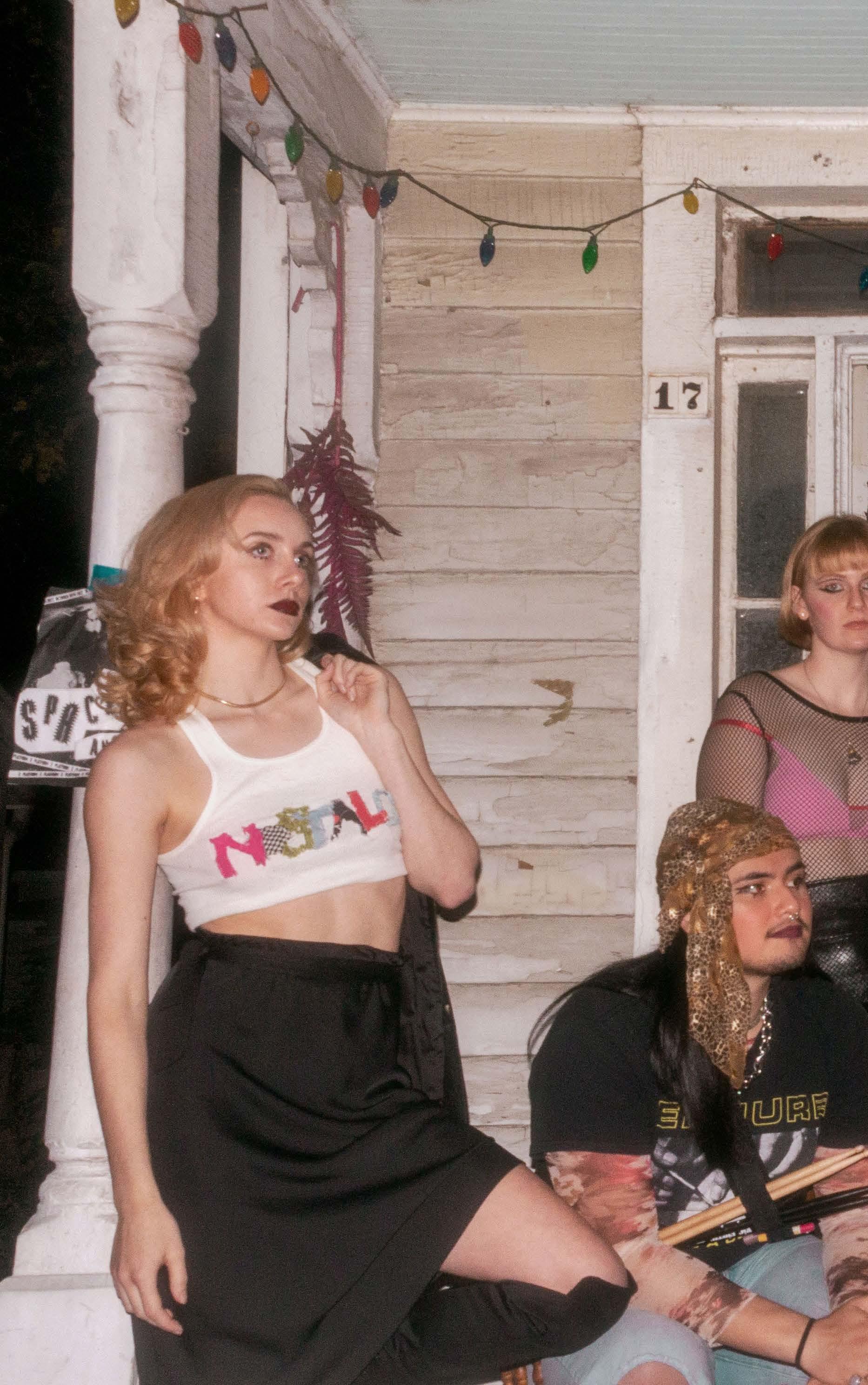 MODELS: Kayla Clark, Caroline Diaz, Kennedi Hosey, Grace Lincroft, & Kai Vosberg PHOTOGRAPHY: Naima Sutton STYLING: Katie Holmstrom, Reagan Kurtz, Lydia Mitchell, Kaeli Murphy, & Liora Tal SET: Sophie Dickerson, Katie Finan, Janey Harlow, Lilo Harris, Erin Secosky, Emma Sullivan, & Julie Zhou
MODELS: Kayla Clark, Caroline Diaz, Kennedi Hosey, Grace Lincroft, & Kai Vosberg PHOTOGRAPHY: Naima Sutton STYLING: Katie Holmstrom, Reagan Kurtz, Lydia Mitchell, Kaeli Murphy, & Liora Tal SET: Sophie Dickerson, Katie Finan, Janey Harlow, Lilo Harris, Erin Secosky, Emma Sullivan, & Julie Zhou
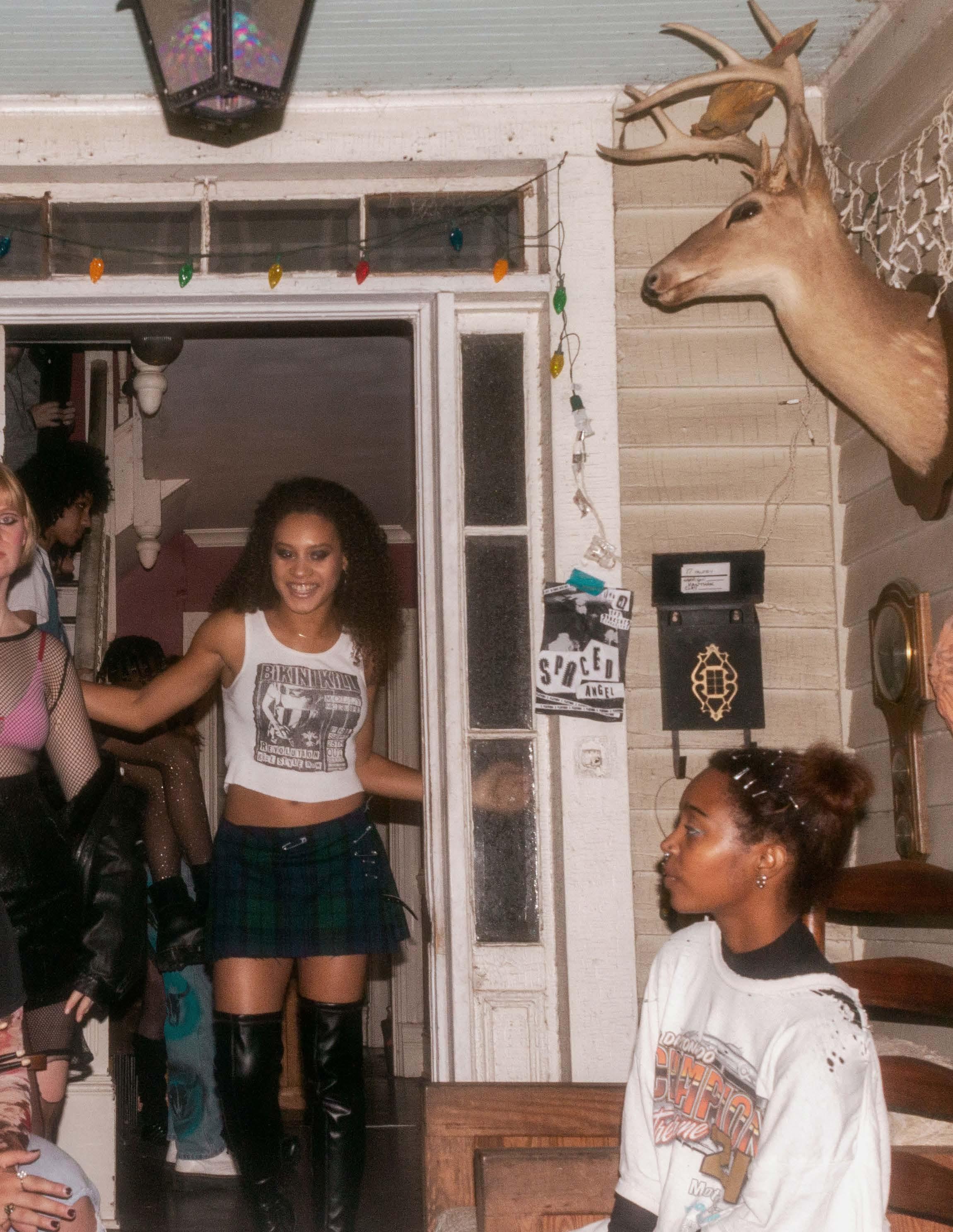

61

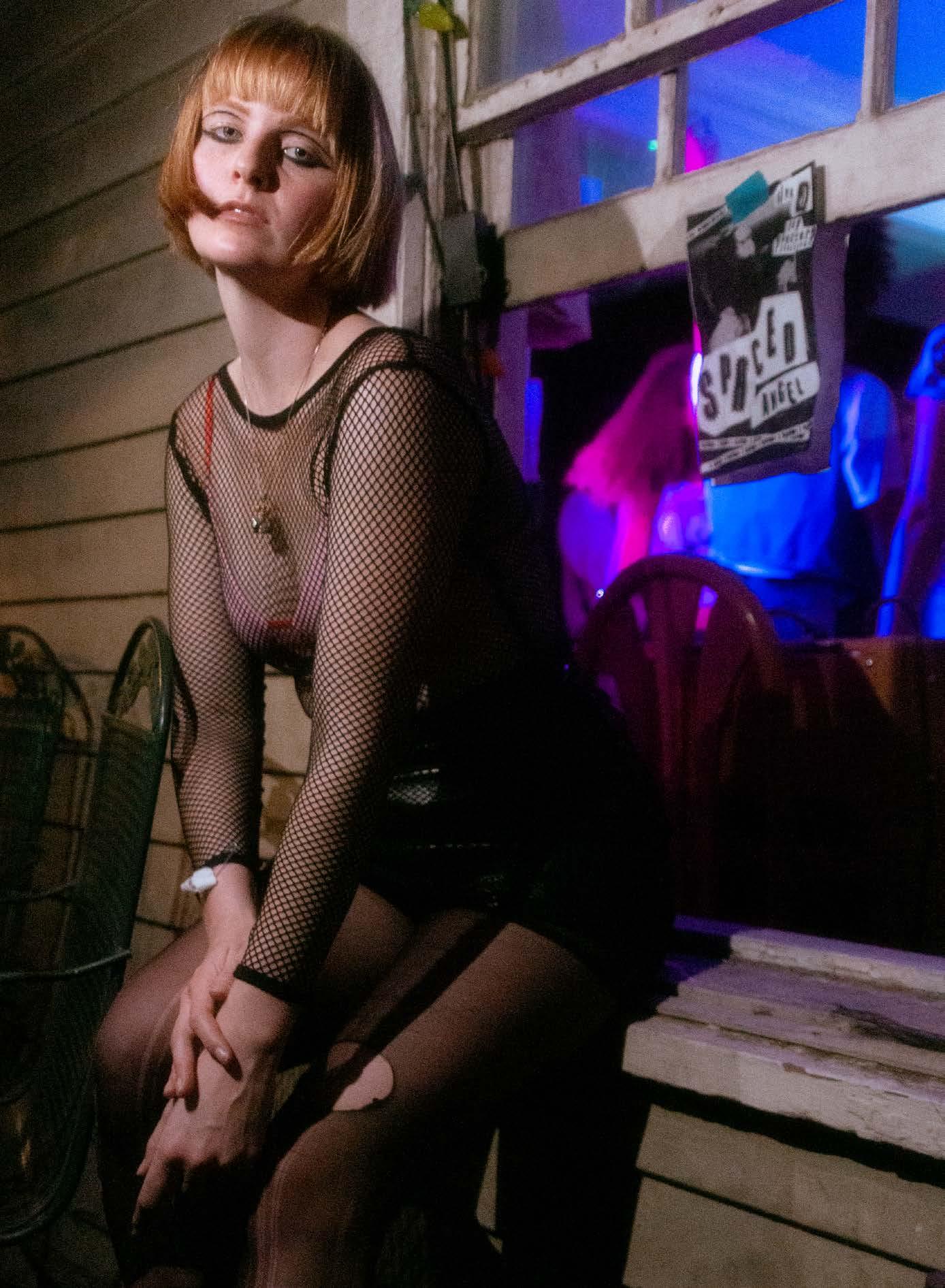
62
MODELS: Caroline Diaz PHOTOGRAPHY: Naima Sutton & Viosa Koliqi STYLING: Liora Tal

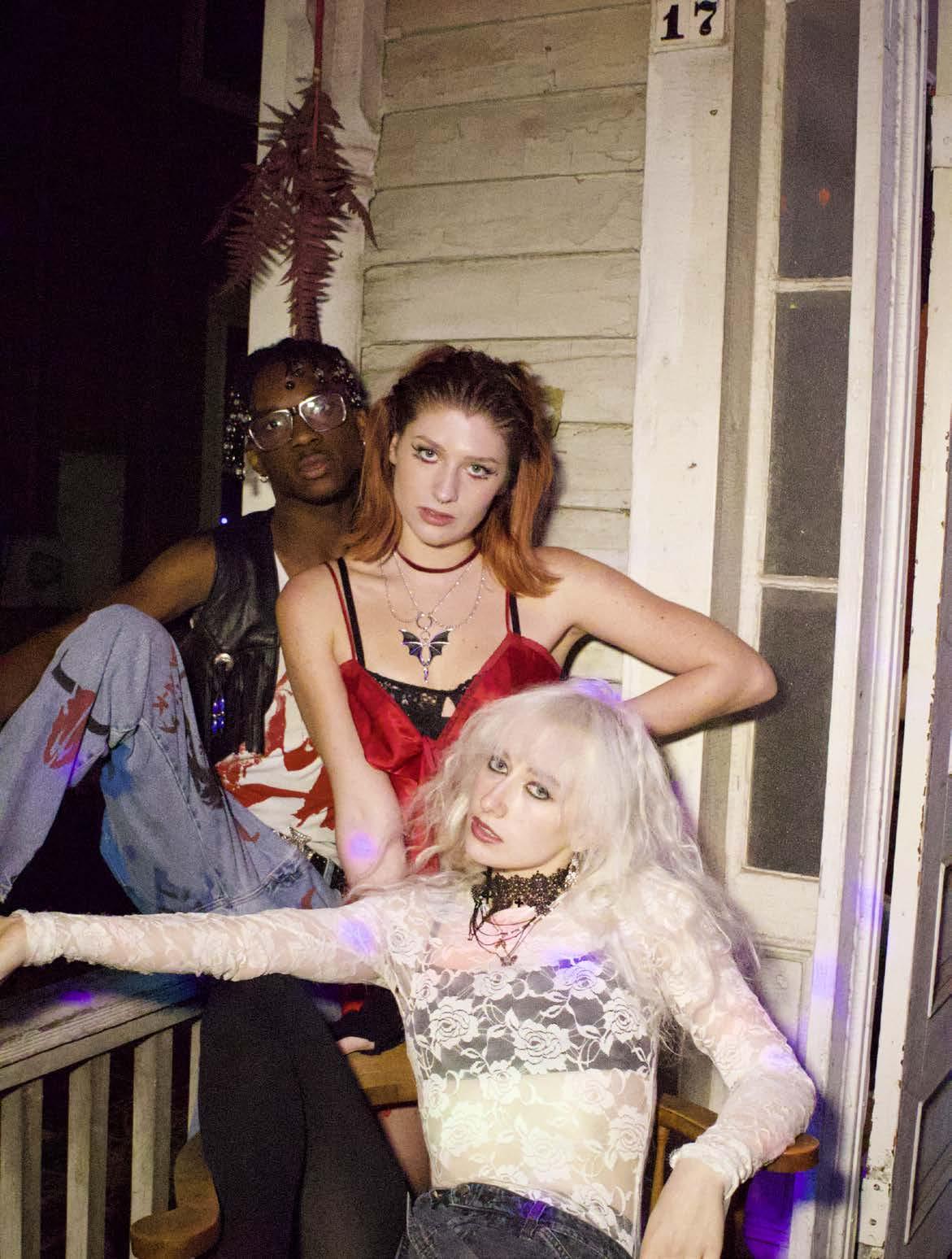 MODELS: India Allan, Immanuel Jackson, & Kat Shwartz
PHOTOGRAPHY: Ksenia Matveeva
MODELS: India Allan, Immanuel Jackson, & Kat Shwartz
PHOTOGRAPHY: Ksenia Matveeva
63
STYLING: Claire Daves, Melis Hafizoglu, & Samantha Roncevich


65
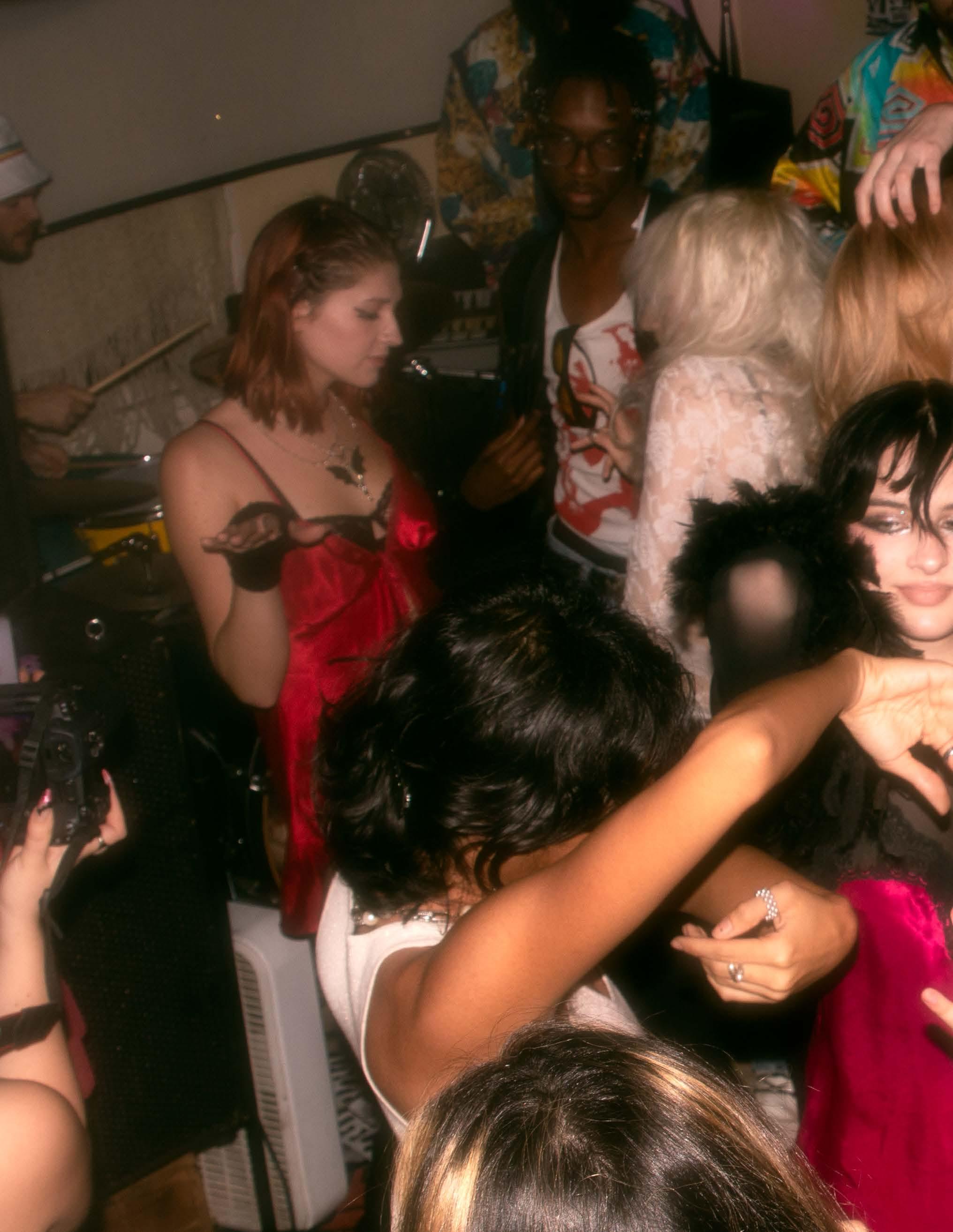

 MODEL: Nicole Harris & Grace Lincroft
PHOTOGRAPHY: Viosa Koliqi & Naima Sutton
MODEL: Nicole Harris & Grace Lincroft
PHOTOGRAPHY: Viosa Koliqi & Naima Sutton
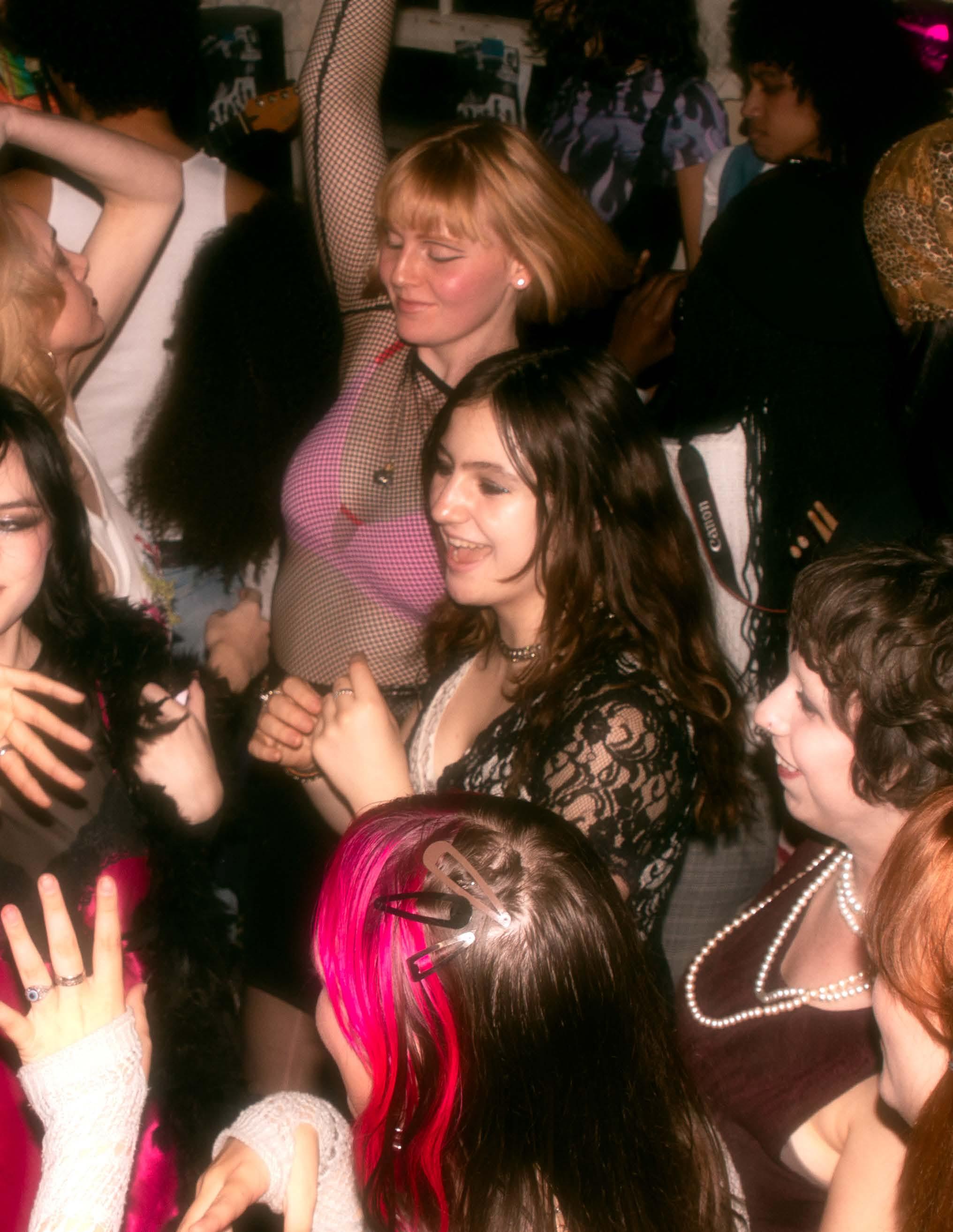
 MODEL: India Allan
PHOTOGRAPHY: Ksenia Matveeva
MODEL: India Allan
PHOTOGRAPHY: Ksenia Matveeva


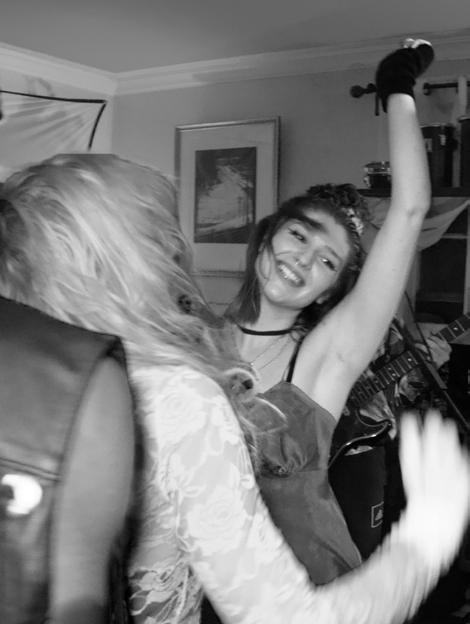
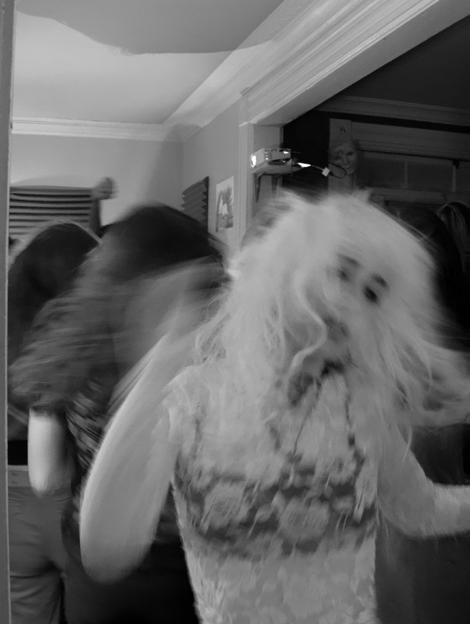

68


OUR
SCENE
DISCO, HOUSE,
HYPERPOP, AND The Recession
by Kate Goodwin
litz and glamor are what we often associate with the 1970s disco era, but all that glitters is not gold. The 70s was an extremely turbulent stage in terms of economic and cultural unrest. High inflation and unequal distribution of economic growth resulted in a concerning unemployment rate, while women, minorities, and the LGBTQ+ community fought for basic liberties. Times of intensified political and social hard ship, bred creativity as a means of escapism from a less-thanideal reality – and what better way to ease the pain than to
Disco music itself evolved from several different subcultures. Origins can be traced back to Philadelphia’s R&B scene during the late 60s and early 70s, featuring heavy influence stemming from African American and Latino musicians and audiences. Underground gay nightclubs and ‘discotheques,’ popular in New York City, were pivotal in the popularization of disco.
Disco is characterized by ‘four-on-the-floor’ beats, repetitive vocals, syncopated basslines, string sections, horns, electric piano, electric rhythm guitars, and synthesizers. The commu nity associated with disco reflected the forward-thinking tem po of the music they jived to. All classes, races, and genders collectively utilized disco as a means to escape and express themselves through art and cultivation. All of these elements provided a foundation for contemporary dance music culture to expand upon these same principles.

The US went into a minor recession in 1990. While lasting only 8 months, and being relatively mild in comparison to other post-war slumps, it was indicative of a jobless recovery where unemployment rates did not increase alongside a pro ductive economy. This, accompanied by civil unrest as a result of the aftermath of the War on Drugs, created a sentiment of animosity. The music that came out of the 90s reflected this angst.



House music originated in Chicago on the back burner of dis co during the 1980s. After gaining international popularity, the scene was set for its dominance in the 90s underground to the mainstream music scene. House and techno are char acterized by repetitive rhythms and fast tempos. This era of experimental rave and moshpit-ready crowds, combined with quintessentially angsty 90s house, curated the perfect environment for individuals to submit themselves to primal

70
expression through art and music. This setting produced an incredibly unique and diverse community within these un derground landscapes. Typified by secrecy, gatherings would take place at venues such as abandoned warehouses, deserted apartment buildings, and open fields– and they would rage all night. 90s house culture, like disco, was particularly embra cive of gay, black, and brown people. Their collectivist attitude of unity under a shared art form and a deeper understanding of social and financial hardship, as indicative of the time pe riod, allowed for the 90s house scene to exist as an escape. As with any creation, it is only a matter of time before the original purpose collapses as it transitions into mainstream popularity. The same goes for 90s house – in becoming main stream, the community of intention is inherently dead and, once again, something new must take its place.
Thus, the scene is set for the hyperpop takeover of the 2000s. Characterized by recession, economic and social hardships fell hard onto the American population over the course of this decade. Long-standing intersectional issues rose to preva lence amidst growing racial tensions, domestic terrorism and safety concerns, and economic downturn. Once again, those disproportionately affected found themselves in cultural tur moil; searching for authentic and welcoming communities to lean on. These circumstances, combined with the rise of the digital age, curated the perfect climate for underground hy
Hyperpop amplifies the core aspects of pop music by encour aging unapologetic grandiosity in expression. Hyperpop is typically characterized by brash synth melodies, auto-tuned “earworm” vocals, and excessive compression and distortion – essentially a digitalization of the core elements of disco that were fine-tuned within house and techno. Communities made their own spaces to express themselves and create by es




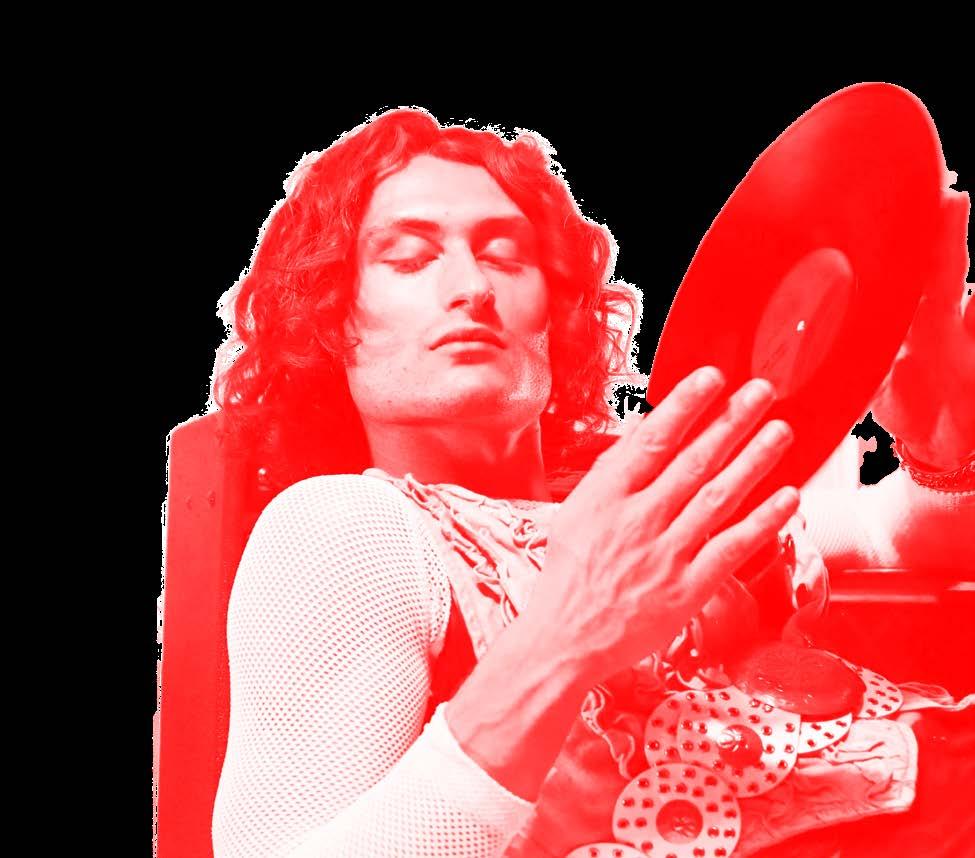
MODELS: Grier Love, Jacob Hodges, & Cora Jones
PHOTOGRAPHY: Natalie Folsom
STYLING:Mira Phillips, Samantha Roncevich, & Sophie Trew
SET: Julie Zhou & Janey Harlow

tablishing underground scenes in the wake of mass gentrifica tion, which closed down the majority of early hyperpop clubs.
As we witness hyperpop’s growing popularity in real-time, one can only infer what is in store for this medium at the hands of the mainstream. In its inevitable demise, what will be created to take its place will be a reflection of the commu nities that enjoy it; a diverse collective, embracing creativity brought on by hardship. Although this phenomenon typically coincides with a multitude of intersectional factors, it remains tenderly simplistic, as it is only natural for people to seek au thentic connection and community.
If you’re reading this, reading this, If you’re I’m sorry

Illustration by Deanna Liao 72
I’m sorry
by Lyric Chassin
Whena person apologizes, they are often expressing their regrets in reference to any sort of misstep, offense, or ac cident. Apologies are intended to earn forgiveness and grant sympathy or show the person on the receiving end that one cares. Whether it’s saving face, comforting someone, or es tablishing decency, an apology has the potential to have an immense impact on one’s life.
Despite only needing to occur under certain circumstanc es, the apology has integrated itself into everyday life in a self-confident jeopardizing way. “Sorry” has become a reflex rather than a sincerity, a jump at reassurance rather than re pentance. The sorry phenomenon has taken over society, and it is affecting the morale of generations to come.
People will apologize for almost anything: a situation they are not responsible for or something that does not need to be explained. Has someone ever bumped into you and you immediately said sorry because you were in their way? This is a prime example of how one feels the need to apologize when they are not at fault. By quickly taking the blame for the situa tion at hand, you are nipping any conflict in the bud.
“Sorry to bother you…” “Sorry that I look tired…” “Sorry I can’t go out…” “Sorry for asking…”
Of course, there are times when an apology is necessary, but there are many situations that “sorry” has snaked its way into. You can sleep in and go to class in a comfy outfit. You can stay in for the night to prioritize yourself. You can ask someone for help. You can get excited about something you are passionate about. All of these actions affect no one but yourself. So why are they generally followed up with an apology?
Apologizing for being too much or not enough, is apologiz ing for being yourself. We feel the need to defend ourselves when our actions are out of the norm or have the possibility of inconveniencing someone. We explain ourselves before any one has the chance to judge us. The guilt and fear of criticism dominate any ounce of self-preservation and we take every opportunity to solicit reassurance. You don’t need to be for given for being yourself.
The tendency to over-apologize can stem from many different sources. You may have struggled with expressing your emo tions during your childhood. You may not have felt seen by your family and friends. Growing up in a toxic household or environment is directly reflected in your confidence; if you viewed yourself as a hindrance then, you most likely translat ed that to your life today.
When you apologize for your words, choices, and actions when they are not harming anyone, you belittle your own confidence and spirit. If we are destined to feel sorry for our selves, we will never fully embrace the person that we already are. We will doubt ourselves and constantly question how others perceive us. “If I don’t apologize for this, they might think I don’t care”. By tearing yourself down, you are dimin ishing your confidence.
If we continue to over-apologize, we will dig ourselves into a deeper hole of self-loathing and pity. Even if you wouldn’t have apologized for something before, the feelings surround ing past instances influence how you go about your actions. Apologizing for your appearance once and getting reassur ance from others, increases the likelihood of you unnecessar ily apologizing again. You begin to feel like a burden in every interaction and believe that you need to make amends for any imperfection, no matter how it affects the people around you.
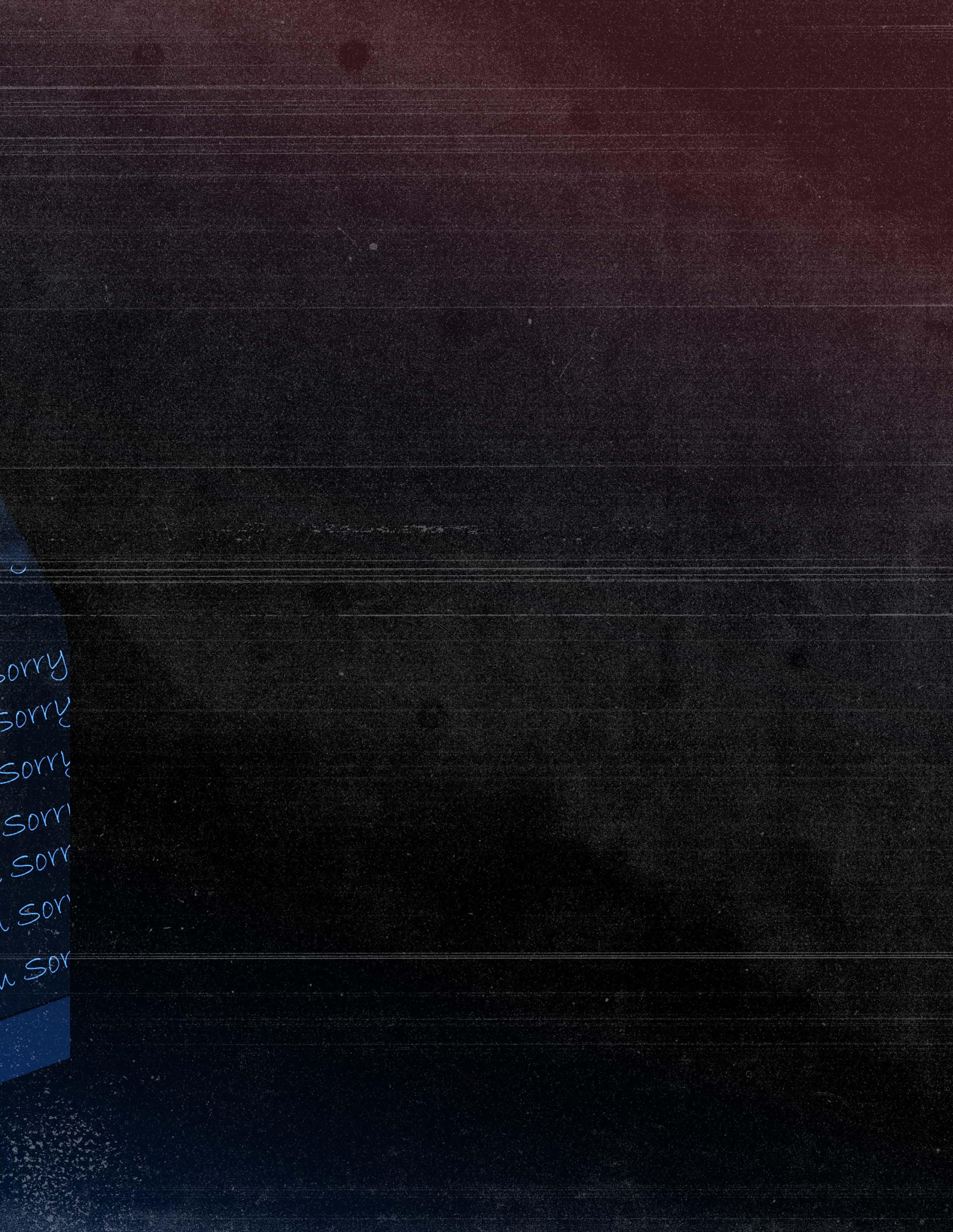
We have ingrained “sorry” into our brains over and over, and old habits die hard. When you feel the urge to apologize for something, take a step back and look at how you frame your words. Instead of asking for forgiveness, express gratitude. “Thank you for listening.” “Thank you for waiting.” “Thank you for your patience.” When you build up others instead of tearing yourself down, you preserve your self-esteem and lay the foundation for healthier interactions with others and with yourself.
Next time you find yourself ready to apologize for being your self, remember that you do not owe anyone anything. You owe it to yourself to protect your confidence and make decisions that are true to you. Never apologize for taking up space. You never need to be sorry for being authentic.
you’re
73
sorry
you’re sorry
THE POLITICS OF FASHION
 by Polly O’Neal
by Polly O’Neal
Thewidespread implications of fashion is a topic that I could talk about virtually forever. I’ve written about it in past editorial pieces and here it is again in the forefront of my mind. This time the idea was brought back to me because of the quickly approaching midterm elections. It can be easy to believe that what a politician wears throughout their can didacy is merely trivial, as long as it is professional and ap propriate; however, I would like to challenge that ideal. My mindset aligns with a specific scene in The Devil Wears Prada Editor-in-Chief, Miranda Priestly, soberly explains how her intern, Andy’s, cerulean blue sweater was specifically chosen for her. Miranda wanted to expose Andy’s naivety in thinking that she was above the implications of fashion. She intention ally humbled her by explaining how even the cheapest clothes found at second-hand stores, originate from the ideas and work of designers who have certain demographics in mind when creating pieces like Andy’s sweater. These designers’ ideas are ever present in our culture, as they hold power over the decisions of the clothing industry as a whole. As a result, it is impossible for her to be “exempt from the fashion industry,” regardless of her mocking attitude towards it. The same goes for any individual in any field of work, including politicians who make life-altering decisions that affect masses of people.

It seems that each party has its own way of sending messages through clothing choices. Donald and Melania Trump were passionate about living out the “American Dream,” in the sense that the money they earned was spent on visibly expensive purchases. The couple was seen wearing luxury brands, such as Dolce & Gabbana and Brioni, even on occasions that were much too casual for luxury apparel. Trump also wore multi ple red ties, symbolizing his devotion to the Republican Party. Obama took a simpler approach by sticking to what he knew worked for him; blue or gray suits. He believed that keeping it simple minimized the number of decisions he had to make, while still presenting himself as professional and tasteful. In contrast to both of these fashion policies, President Biden and
“HER COLOR CHOICE COULD NOT HAVE BEEN MORE FITTING OR POWERFUL”
Vice President Harris entered the White House on inauguration day in the clothes of U.S. designers, Ralph Lauren and Pyer Moss. The decision to use these designers aligned with the color scheme of their outfits, which was primarily purple. Purple, a mix of red and blue, symbolized the unity that the new elects wanted for our country. In addition, purple is oftentimes a color that symbolizes feminism, which I presume to have definitely been intentional on Harris’s part. The symbolism stems from the suffragette’s fight for a woman’s right to vote in the early 1900s. The color purple em bodied “the royal blood that flows in the veins of every suffrag ette” (Women’s Suffrage Memorabilia: An Illustrated Historical Study by Kenneth Florey). With Harris being the first-ever female Vice President, her color choice could have not been more fitting or powerful.
74
“YOU’LL LOOK GOOD DOING IT”
With the upcoming 2022 midterm elections quickly ap proaching, I challenge you to be observant of what each can didate is wearing. There could be much meaning and thought behind an outfit, or maybe none at all. I think that the style choices (or lack thereof) of our candidates can be telling of their personalities, beyond the political identity they put out into the world. That being said, as much as I think the impact of fashion can be undervalued in the professional world, it is crucial to remember that what a candidate looks like does not encompass their values and potential as a politician. It is up to us as citizens to educate ourselves, beyond the mass me dia that is available to us in mere seconds with the click of a button. Yes, that means going beyond a hyperlink that an

influencer posted on Instagram. The value of finding credible sources to inform your voting decisions could be life-chang ing for you and countless others. So, as much as I stress the involvement, I promise that no matter what you wear to the polls, you’ll look good while doing it.
 Illustration by Kevin Foster
Illustration by Kevin Foster
75

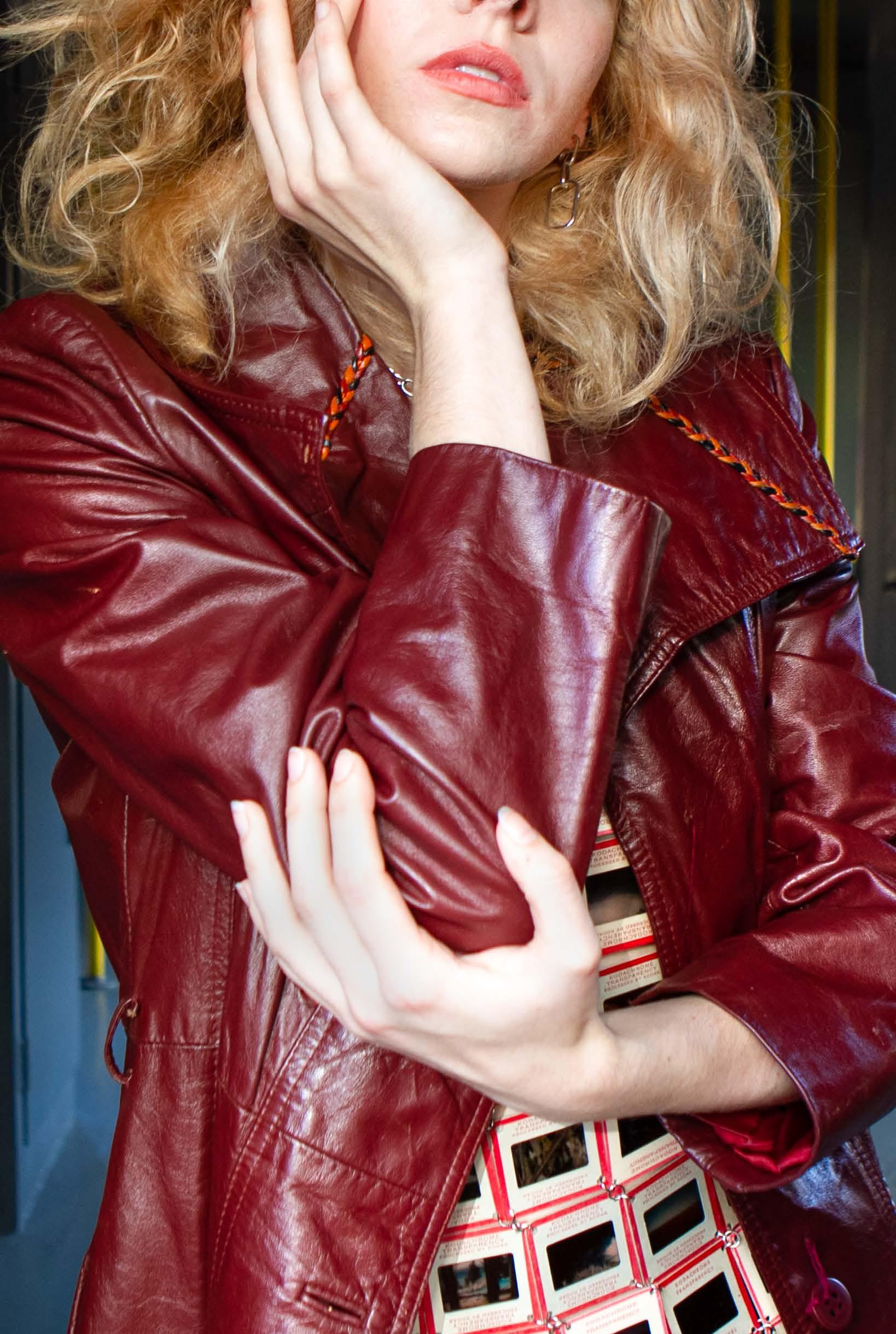
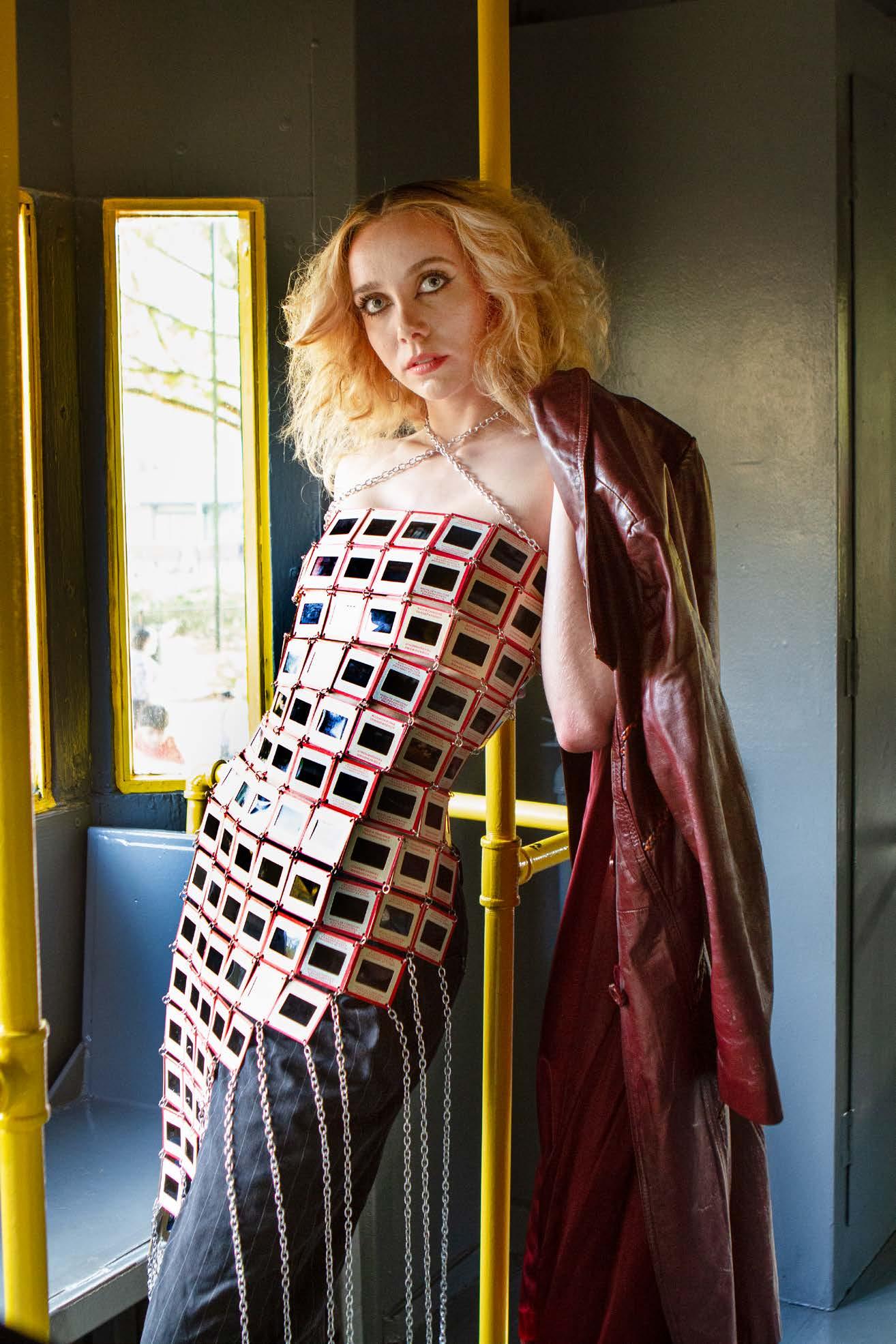


79

80


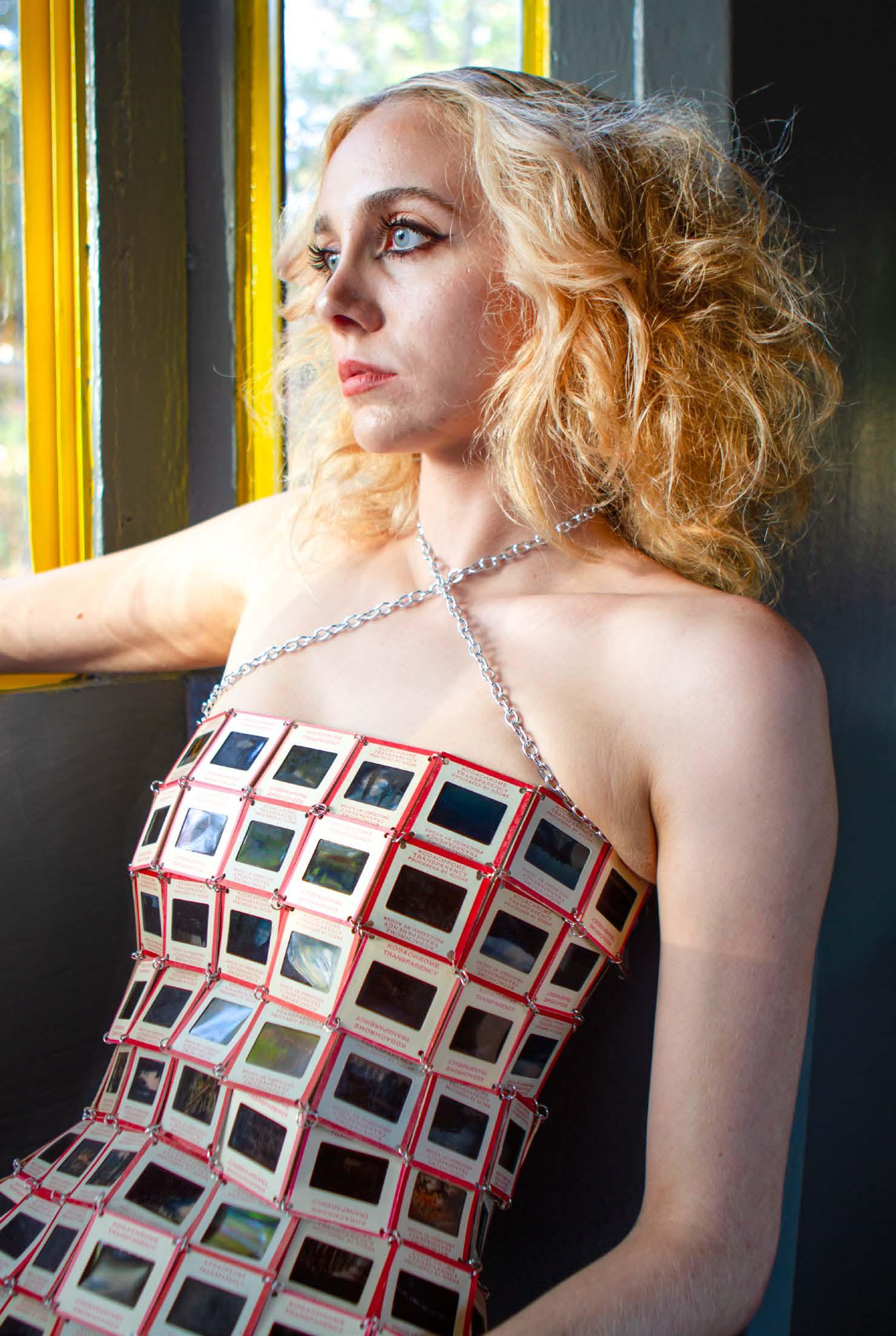





































 Sarah Quinn Editor-in-Chief
Sarah Quinn Editor-in-Chief






 MODEL: Jimmy McManus
PHOTOGRAPHY: Ksenia Matveeva
STYLING: Mira Phillips
MODEL: Jimmy McManus
PHOTOGRAPHY: Ksenia Matveeva
STYLING: Mira Phillips

 MODEL: Hannah Simpson
MODEL: Hannah Simpson





 MODELS: Cora Jones & Grier Love PHOTOGRAPHY: Sarah Jarrell, & Tae Park STYLING: Virginia Carter & Melis Hafizoglu
MODELS: Cora Jones & Grier Love PHOTOGRAPHY: Sarah Jarrell, & Tae Park STYLING: Virginia Carter & Melis Hafizoglu
 MODELS: Jimmy McManus & Eleanor Slyman
MODELS: Jimmy McManus & Eleanor Slyman



 PHOTOGRAPHY: Rory Sullivan
PHOTOGRAPHY: Rory Sullivan


 BY LEAH TRAN
BY LEAH TRAN





 by Isabella Broccolo
by Isabella Broccolo


 MODELS: Nyssa Ndey-Bongo & Jada Williams
PHOTOGRAPHY: Naima Sutton STYLING: Katie Holmstrom, Isaac Davis & Reagan Kurtz
MODELS: Nyssa Ndey-Bongo & Jada Williams
PHOTOGRAPHY: Naima Sutton STYLING: Katie Holmstrom, Isaac Davis & Reagan Kurtz







 MODELS: Nyssa Ndey-Bongo & Jada Williams
MODELS: Nyssa Ndey-Bongo & Jada Williams

 MODEL: Stella Park
Natalie Folsom
Amaya Al-Mussawir
MODEL: Stella Park
Natalie Folsom
Amaya Al-Mussawir













 MODELS: Rayan Chaundhry
Sarah Jarrell
by Sloane Byrd
MODELS: Rayan Chaundhry
Sarah Jarrell
by Sloane Byrd





 by Klarissa Kronschnabel
MODELS: Kennedi Hosey & Aiden Tampton PHOTOGRAPHY: Maya Mitchall STYLING: Tyler Smith & Braxton Hare
by Klarissa Kronschnabel
MODELS: Kennedi Hosey & Aiden Tampton PHOTOGRAPHY: Maya Mitchall STYLING: Tyler Smith & Braxton Hare


 MODELS: Hannah Simpson, Nadhir Sait, & Fidelise Paku PHOTOGRAPHY: Natalie Folsom STYLING: Lydia Mitchell, Sophie Timberlake, & Kendall Wisniewski SET: Katie Finan & Janey Harlow
MODELS: Hannah Simpson, Nadhir Sait, & Fidelise Paku PHOTOGRAPHY: Natalie Folsom STYLING: Lydia Mitchell, Sophie Timberlake, & Kendall Wisniewski SET: Katie Finan & Janey Harlow







 MODEL: Hannah Simpson, Nadhir Sait, & Lara Yassin PHOTOGRAPHY: Natalie Folsom & Tae Park STYLING: Samantha Roncevich SET: Janey Harlow & Erin Secosky
MODEL: Hannah Simpson, Nadhir Sait, & Lara Yassin PHOTOGRAPHY: Natalie Folsom & Tae Park STYLING: Samantha Roncevich SET: Janey Harlow & Erin Secosky
 MODELS: Hannah Hatch, Swetha Natarajan, & Lara Yassin
PHOTOGRAPHY: Tae Park
STYLING: Lindsay Love, Nikki Miller, & Samantha Roncevich
SET: Janey Harlow & Erin Secosky
MODELS: Hannah Hatch, Swetha Natarajan, & Lara Yassin
PHOTOGRAPHY: Tae Park
STYLING: Lindsay Love, Nikki Miller, & Samantha Roncevich
SET: Janey Harlow & Erin Secosky





 MODELS: Justus Denizard, Jacob Hodges, Rachel Kelly
PHOTOGRAPHY: Taylor Wittig STYLING: Sydney Brown, Tanner Hamerling, & Liora Tal SET: Janey Harlow
MODELS: Justus Denizard, Jacob Hodges, Rachel Kelly
PHOTOGRAPHY: Taylor Wittig STYLING: Sydney Brown, Tanner Hamerling, & Liora Tal SET: Janey Harlow








 by Omia Haroon
by Omia Haroon



 Illustrations by Chandler Lamm
Illustrations by Chandler Lamm


 MODELS: Kayla Clark, Caroline Diaz, Kennedi Hosey, Grace Lincroft, & Kai Vosberg PHOTOGRAPHY: Naima Sutton STYLING: Katie Holmstrom, Reagan Kurtz, Lydia Mitchell, Kaeli Murphy, & Liora Tal SET: Sophie Dickerson, Katie Finan, Janey Harlow, Lilo Harris, Erin Secosky, Emma Sullivan, & Julie Zhou
MODELS: Kayla Clark, Caroline Diaz, Kennedi Hosey, Grace Lincroft, & Kai Vosberg PHOTOGRAPHY: Naima Sutton STYLING: Katie Holmstrom, Reagan Kurtz, Lydia Mitchell, Kaeli Murphy, & Liora Tal SET: Sophie Dickerson, Katie Finan, Janey Harlow, Lilo Harris, Erin Secosky, Emma Sullivan, & Julie Zhou





 MODELS: India Allan, Immanuel Jackson, & Kat Shwartz
PHOTOGRAPHY: Ksenia Matveeva
MODELS: India Allan, Immanuel Jackson, & Kat Shwartz
PHOTOGRAPHY: Ksenia Matveeva




 MODEL: Nicole Harris & Grace Lincroft
PHOTOGRAPHY: Viosa Koliqi & Naima Sutton
MODEL: Nicole Harris & Grace Lincroft
PHOTOGRAPHY: Viosa Koliqi & Naima Sutton

 MODEL: India Allan
PHOTOGRAPHY: Ksenia Matveeva
MODEL: India Allan
PHOTOGRAPHY: Ksenia Matveeva




















 by Polly O’Neal
by Polly O’Neal


 Illustration by Kevin Foster
Illustration by Kevin Foster








